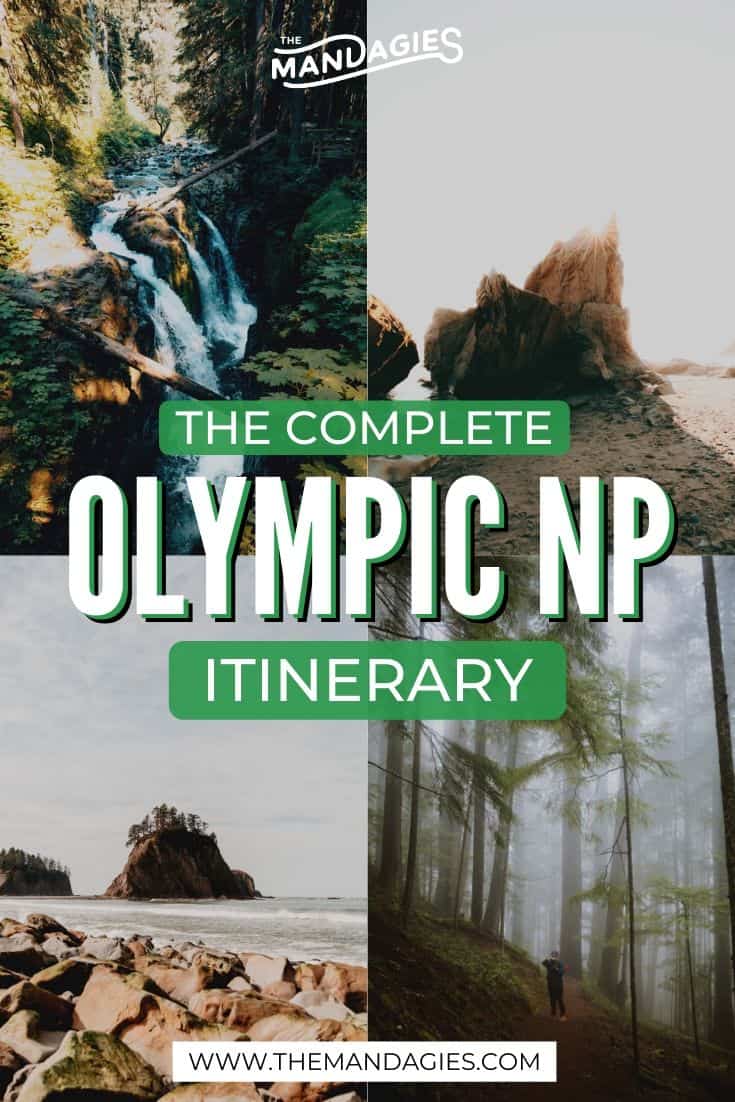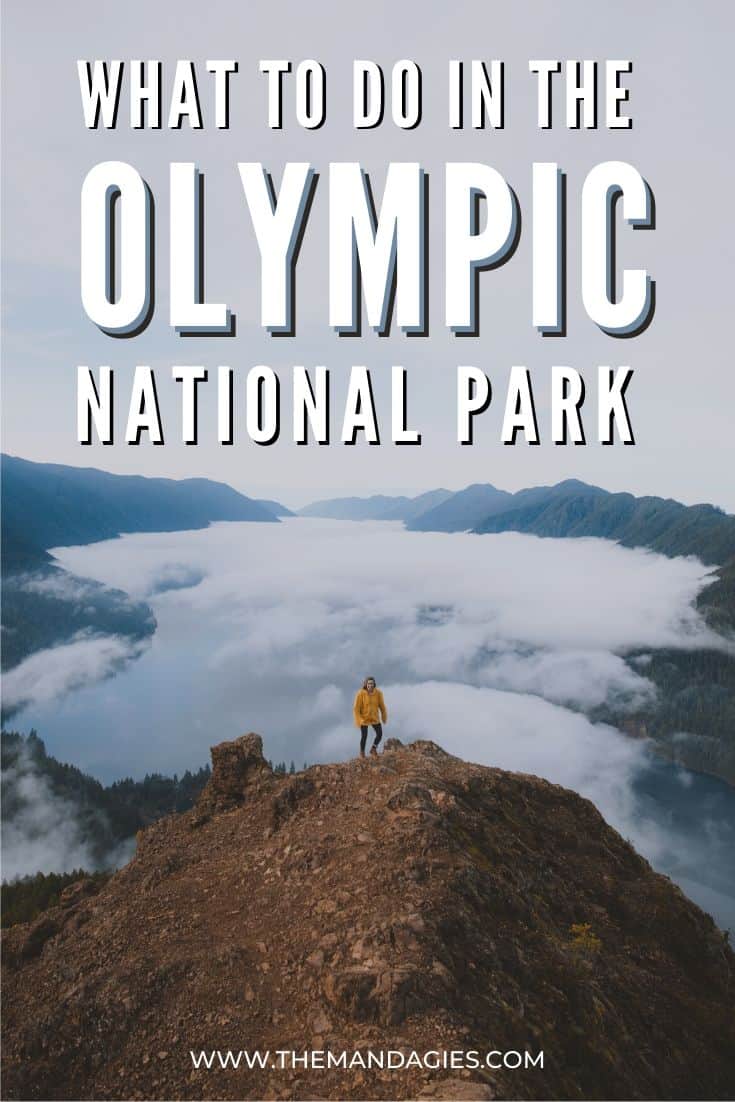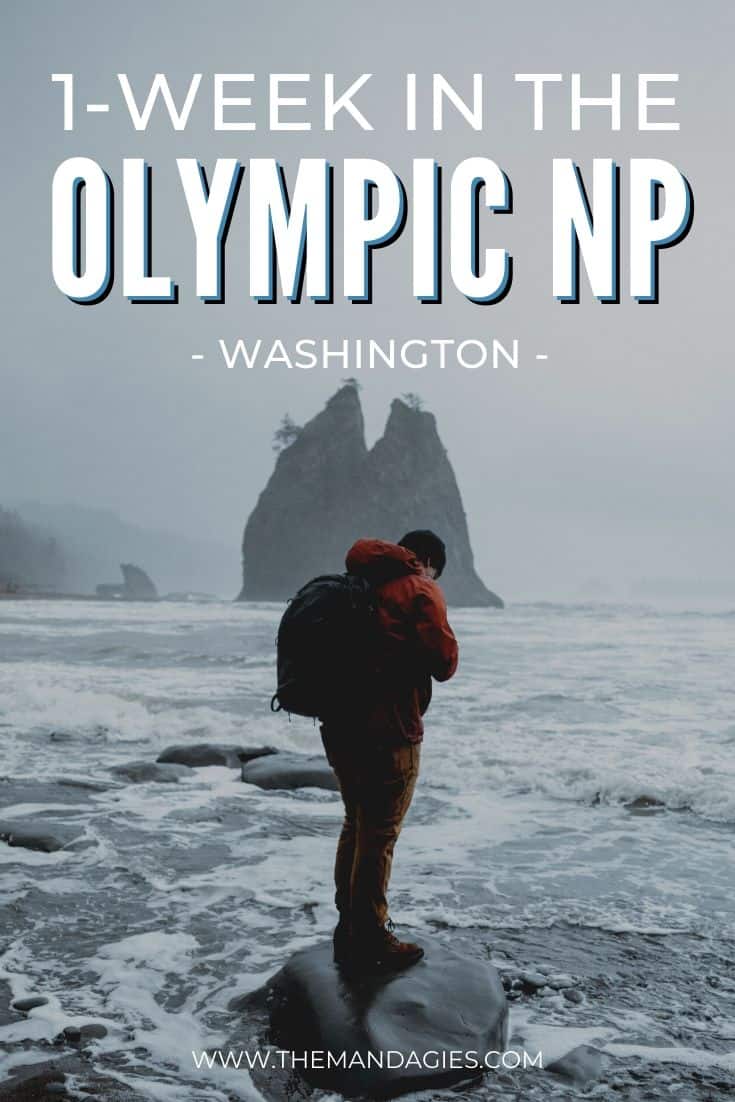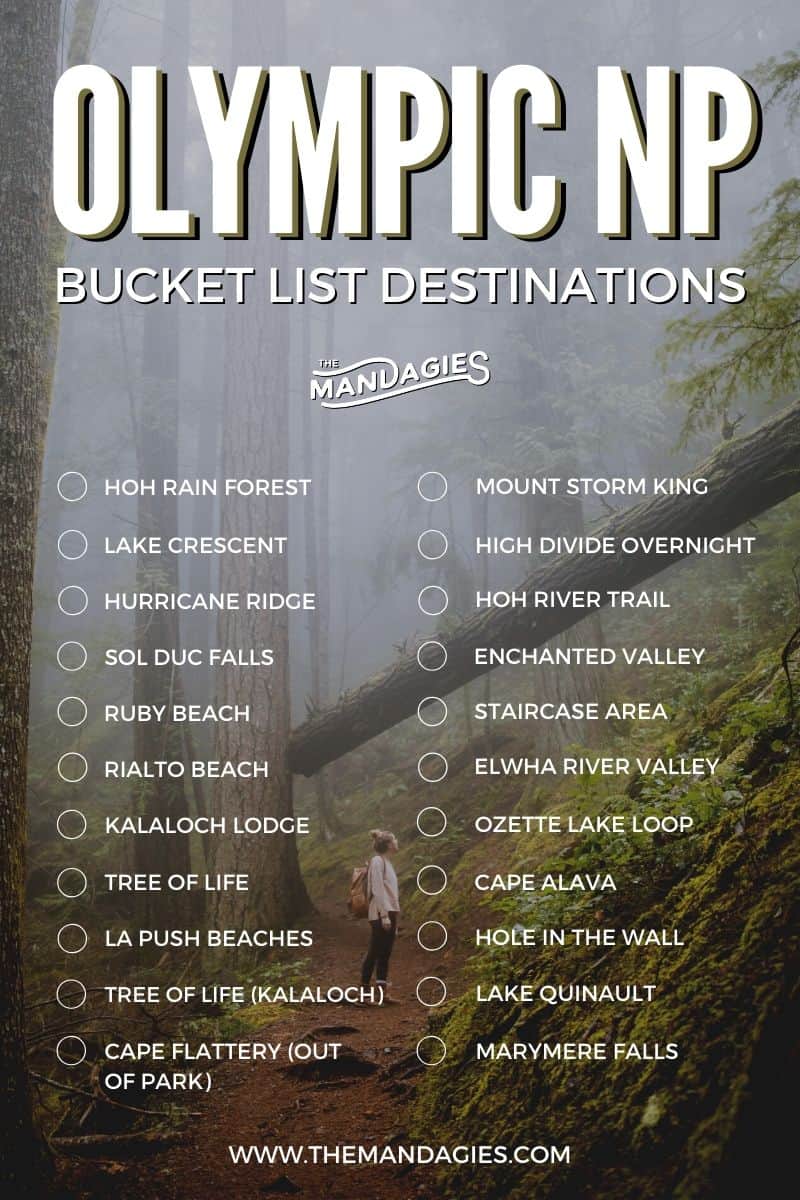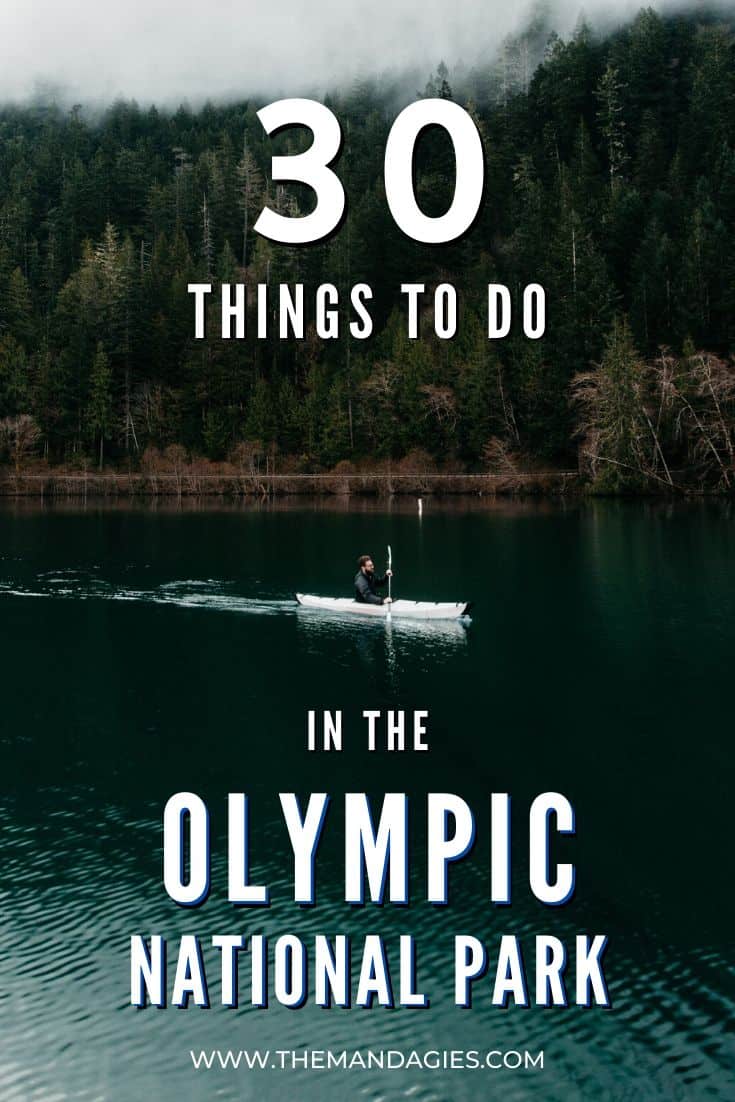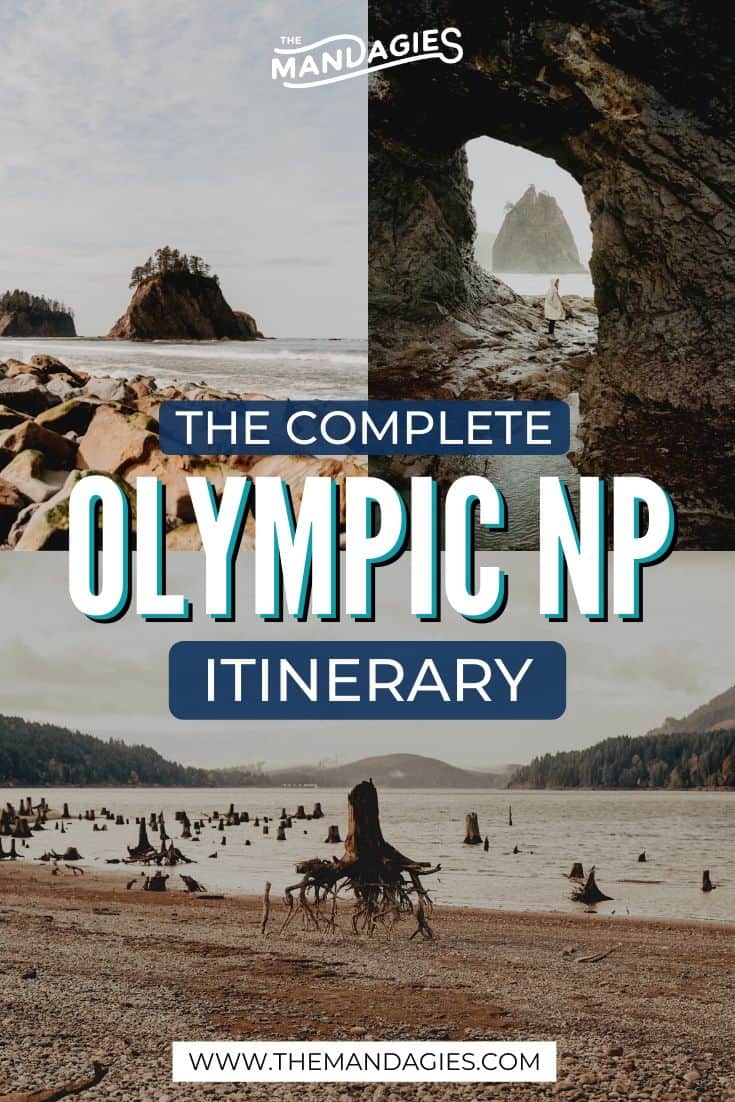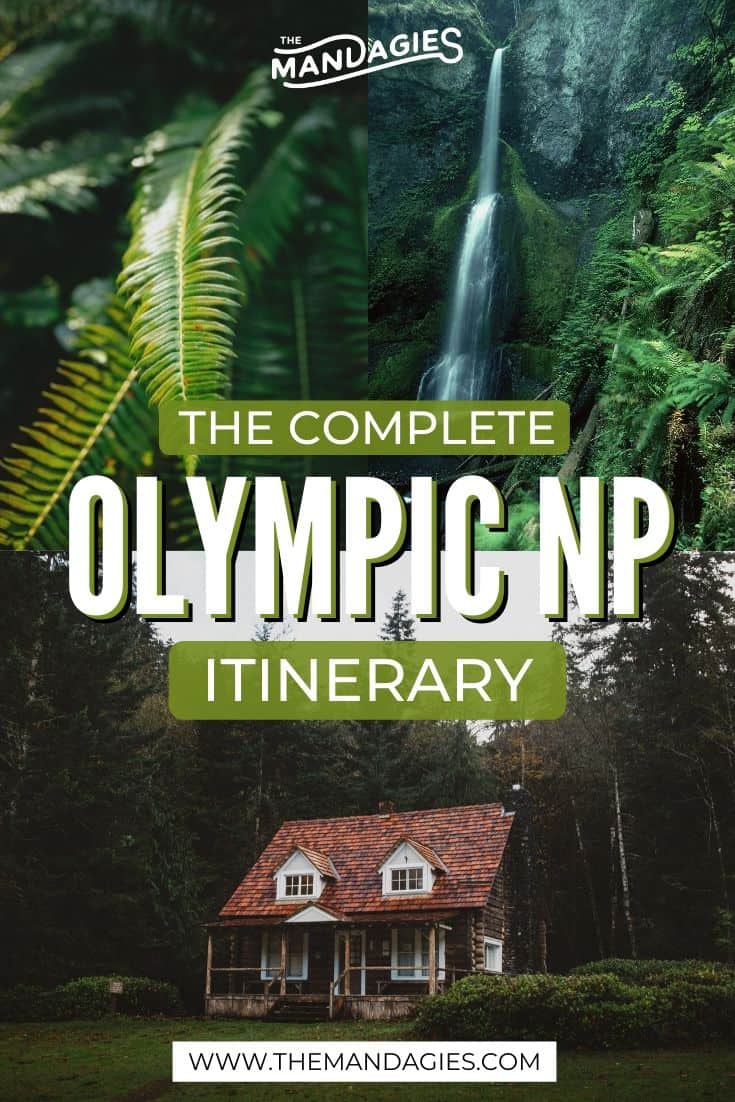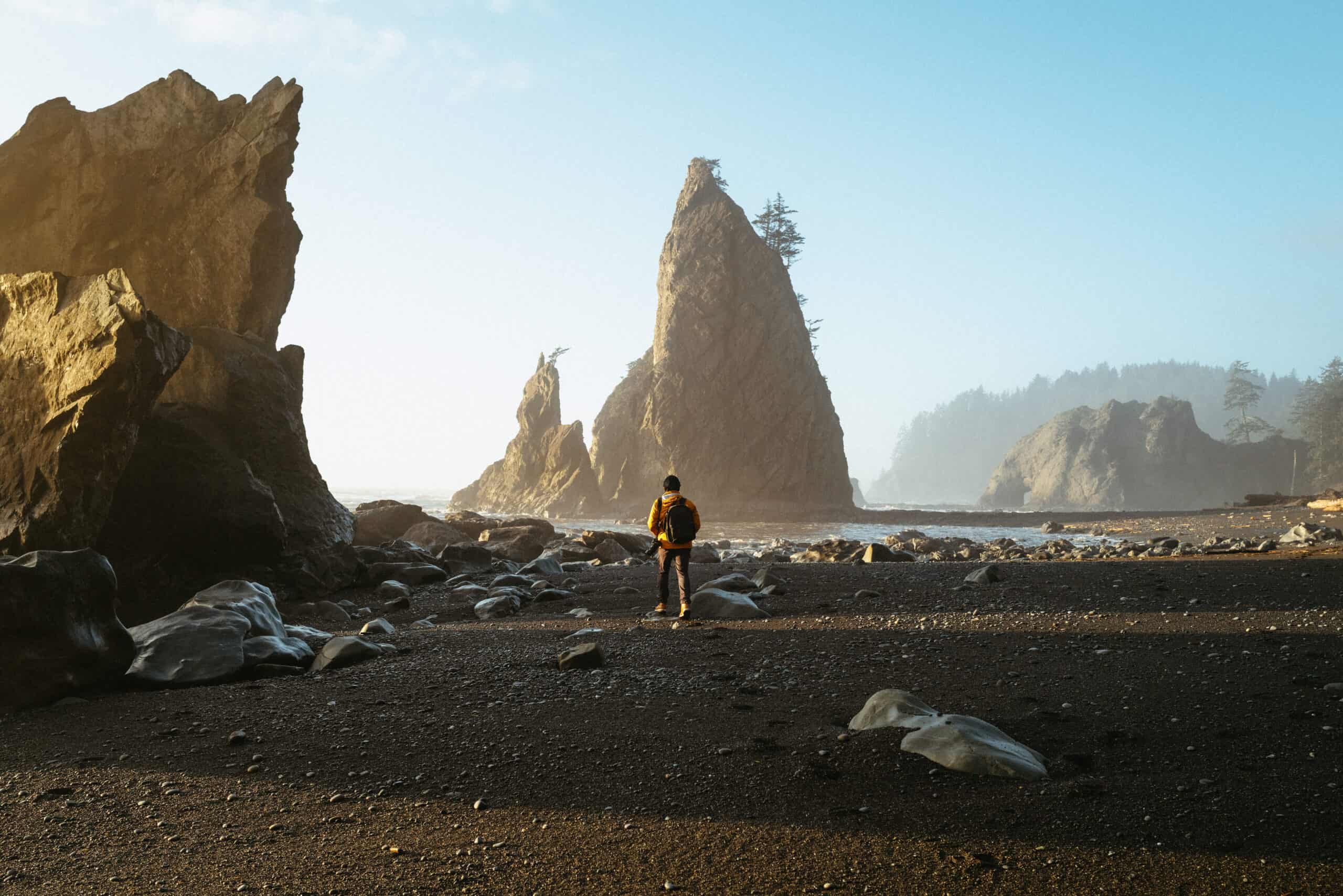Post Summary: The Best Things To Do In Olympic National Park (Washington State)
More than ever, Berty and I are yearning for some enchanting adventure. An opportunity to get outside and be taken aback by the magic of the Pacific Northwest.
Do you feel that way, too? The perfect mix of tranquility and the trip of a lifetime is actually not that far away! You can find it tucked away on Washington’s Olympic Peninsula.
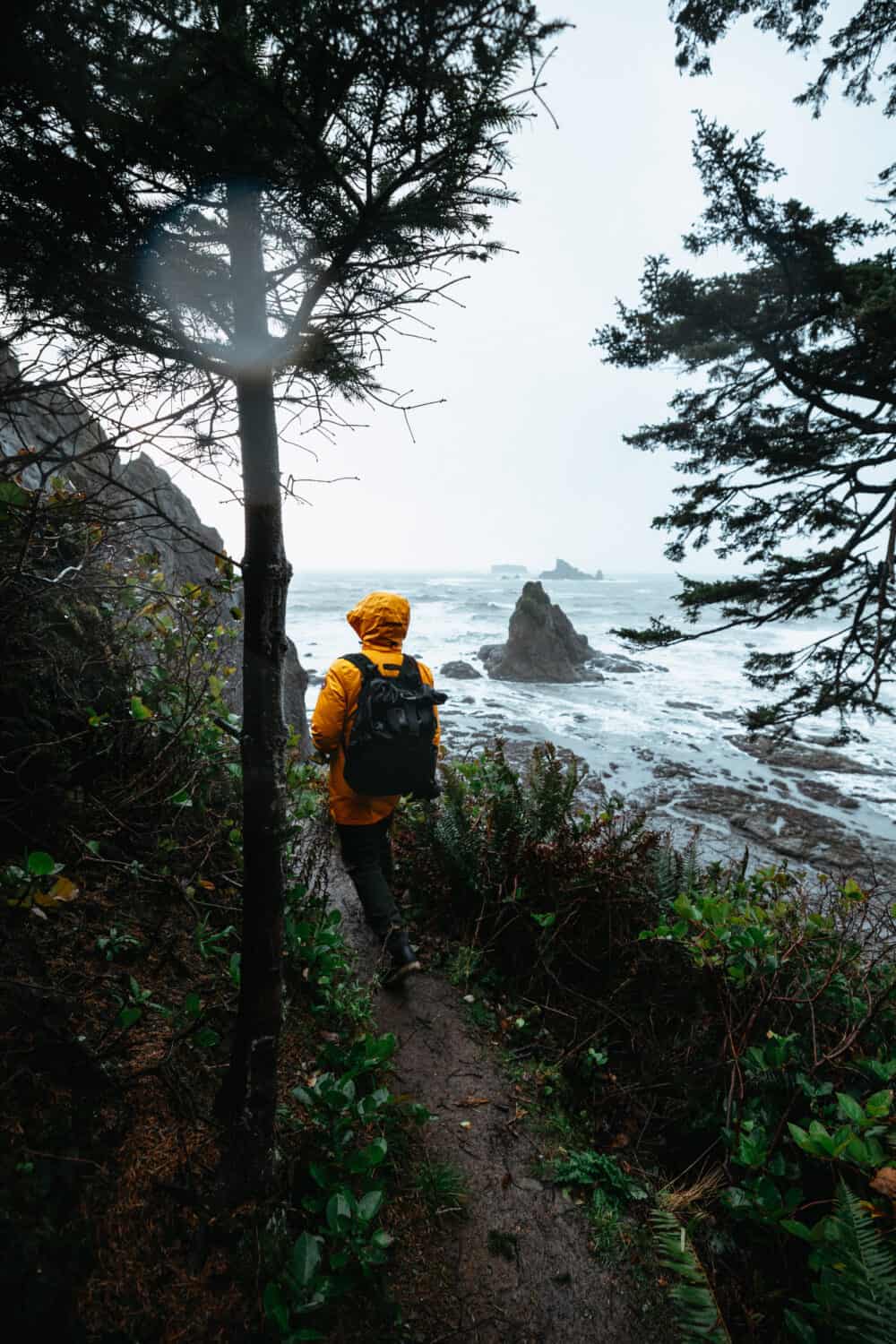
We’re talking about the Olympic National Park – a haven for hikers, backpackers, photographers, and beachcombers!
With 70 miles of wild coastline, endless rainforest trails, and snow-capped mountains, this 1-million acre area will surely leave you breathless. Experience it in a long weekend or with an epic road trip – there’s no wrong way to visit this Washington gem!
In this post, we’re breaking down all the things to do in Olympic National Park into separate areas, and sharing our favorite activities, hikes, photo opportunities, and so much more. We’re also sharing our favorite camping spots, lodging options, and more juicy tips for your best trip yet!
Let’s get exploring!
The Ultimate Guide To The Olympic National Park in Washington
- The Ultimate Guide To The Olympic National Park in Washington
- Pacific Coastline Area
- Olympic Mountains Areas (North)
- Olympic National Park Rainforest (West)
- Olympic National Park Rainforest (East)
- Olympic National Park Itinerary
- Map Of Olympic National Park
- Olympic National Park FAQ
- MORE WASHINGTON DESTINATIONS
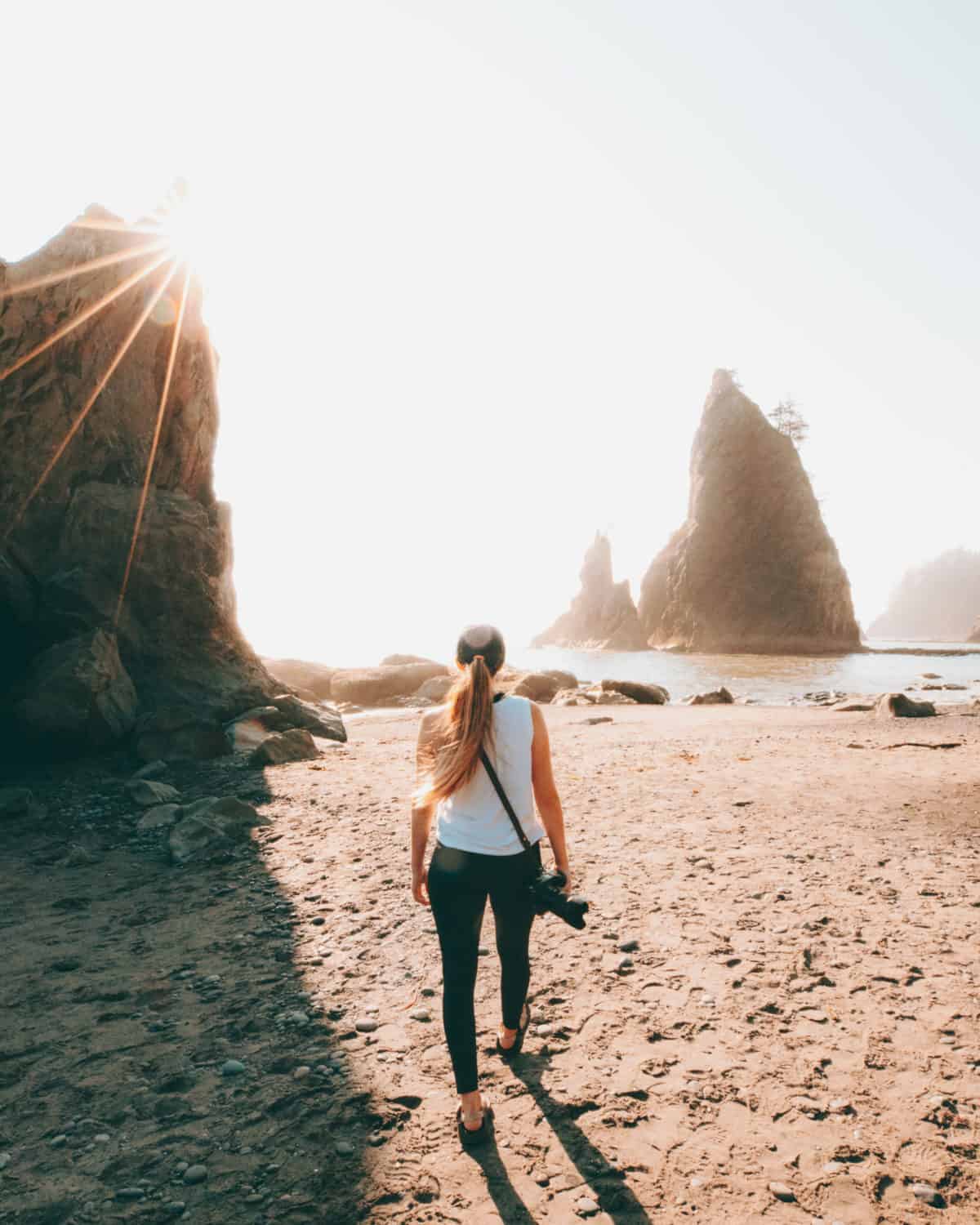
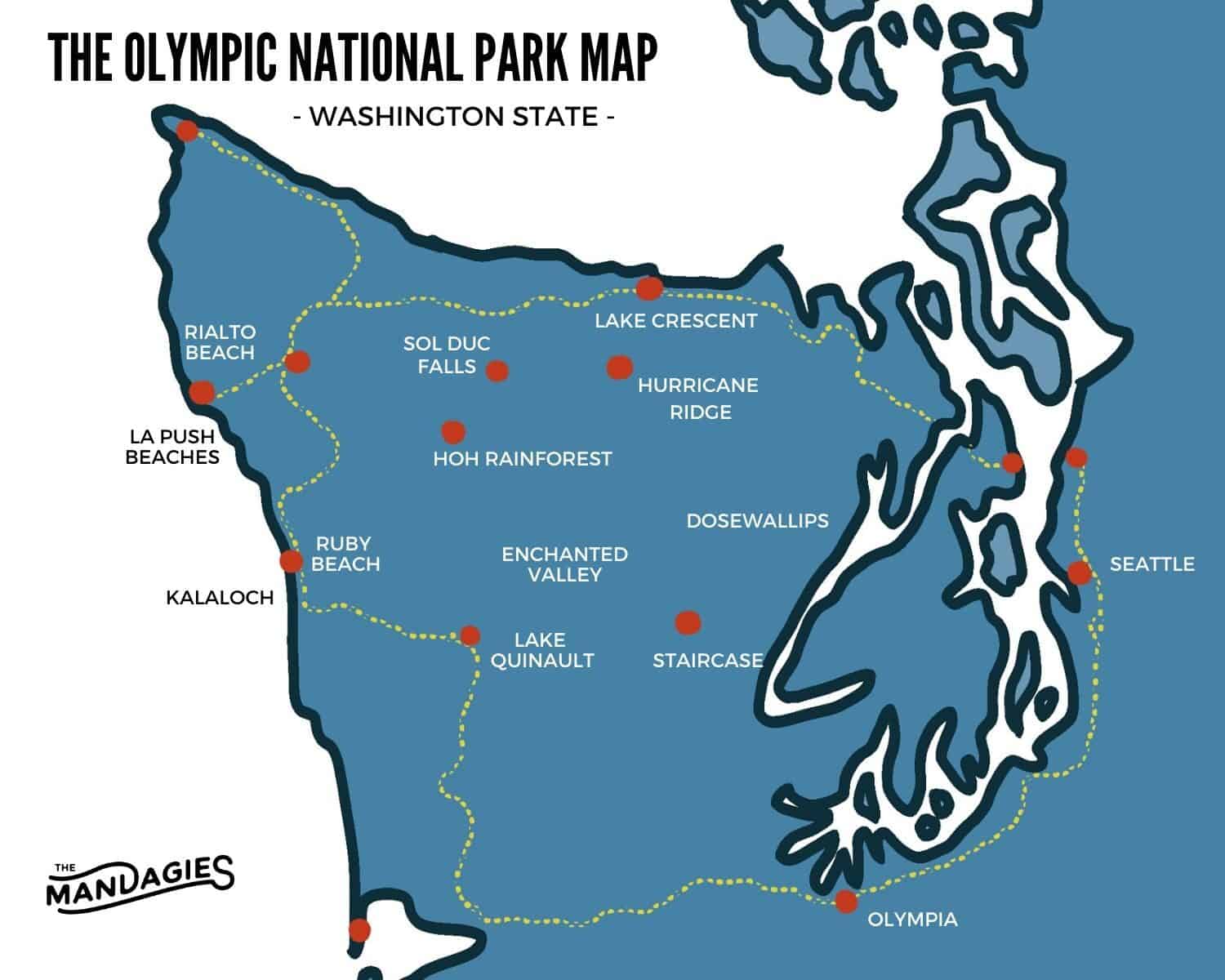
Where is The Olympic National Park?
If you think of Washington as an oven mitt, Olympic National Park is located on the thumb.
In more official terms, it’s located in the westernmost section of the state, on the top of the Olympic Peninsula. The Olympic National Park has about 1 million acres of land, and the surrounding area generally consists of the Olympic National Forest.
Both of these entities work together to preserve the unique biodiversity of the area, for the enjoyment of all visitors!
Read More: Take This Long Weekend Road Trip Around The Olympic Peninsula
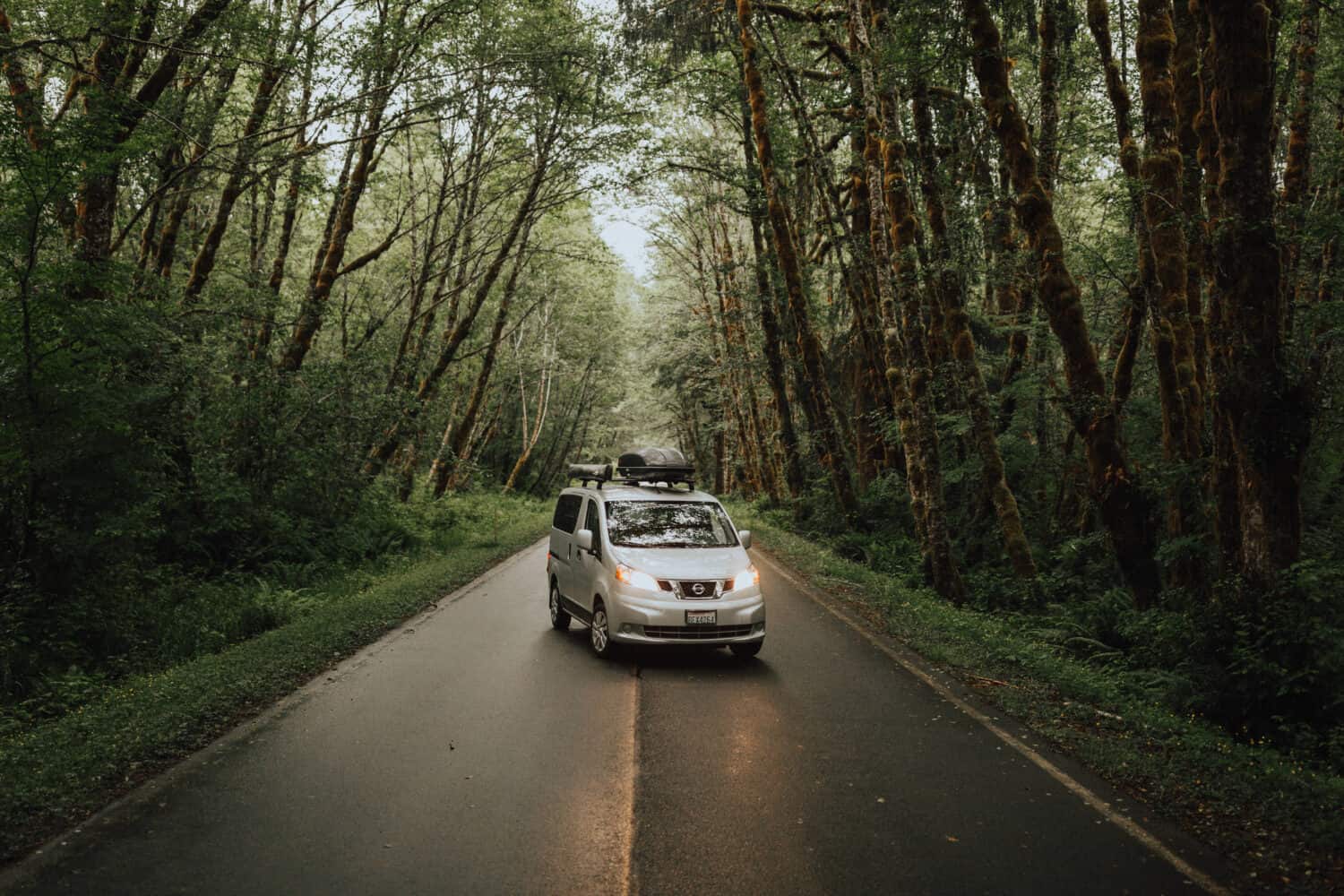
Getting To Olympic National Park (And Getting Around)
If you live far away (aka not in the Pacific Northwest) the easiest way to get to the park is to fly into Seattle, Washington (SEA) and rent a car. From the airport, you can take the ~2.5-3 hour drive to Port Angeles to begin your itinerary.
Distance from major cities to the Port Angeles Visitor Center: (3002 Mount Angeles Road, Port Angeles, WA 98362)
- Seattle, WA to Port Angeles, WA: 105 Miles – 3-Hour 30-Minute Drive
- Portland, OR to Port Angeles, WA: 253 Miles – 4-Hour 49-Minute Drive
- Spokane, Washington to Port Angeles: 400 Miles – 6-Hour 30-Minute Drive
Renting A Car
The best way to get around the park is by car. There isn’t a shuttle system in the Olympic National Park, and many of the popular spots are a fairly decent drive from one another.
If you want to do a combination of lodging and camping, our recommendation is to rent a camper van from Outdoorsy. It’s like Airbnb but for vehicles, so you can take to the Olympic Peninsula in style with a vintage VW van, teardrop trailer, or even a full-on RV!
Renting through Outdoorsy comes with complete insurance, so you can feel covered and safe on your adventures.
Find Your Route, Gas Stops, and Campgrounds
For an easy way to plan all the logistics of an Olympic National Park trip, we liked to use the app The Dyrt. The Dyrt is the largest campground database, with over 44,000 public and private spots to browse and find!
Pro members can use their road trip planner, which helps find the best campgrounds and gas stops along our route. Unlock even more pro features like BLM maps + offline browsing, and get a 30-day FREE trial by using our code MANDAGIES!
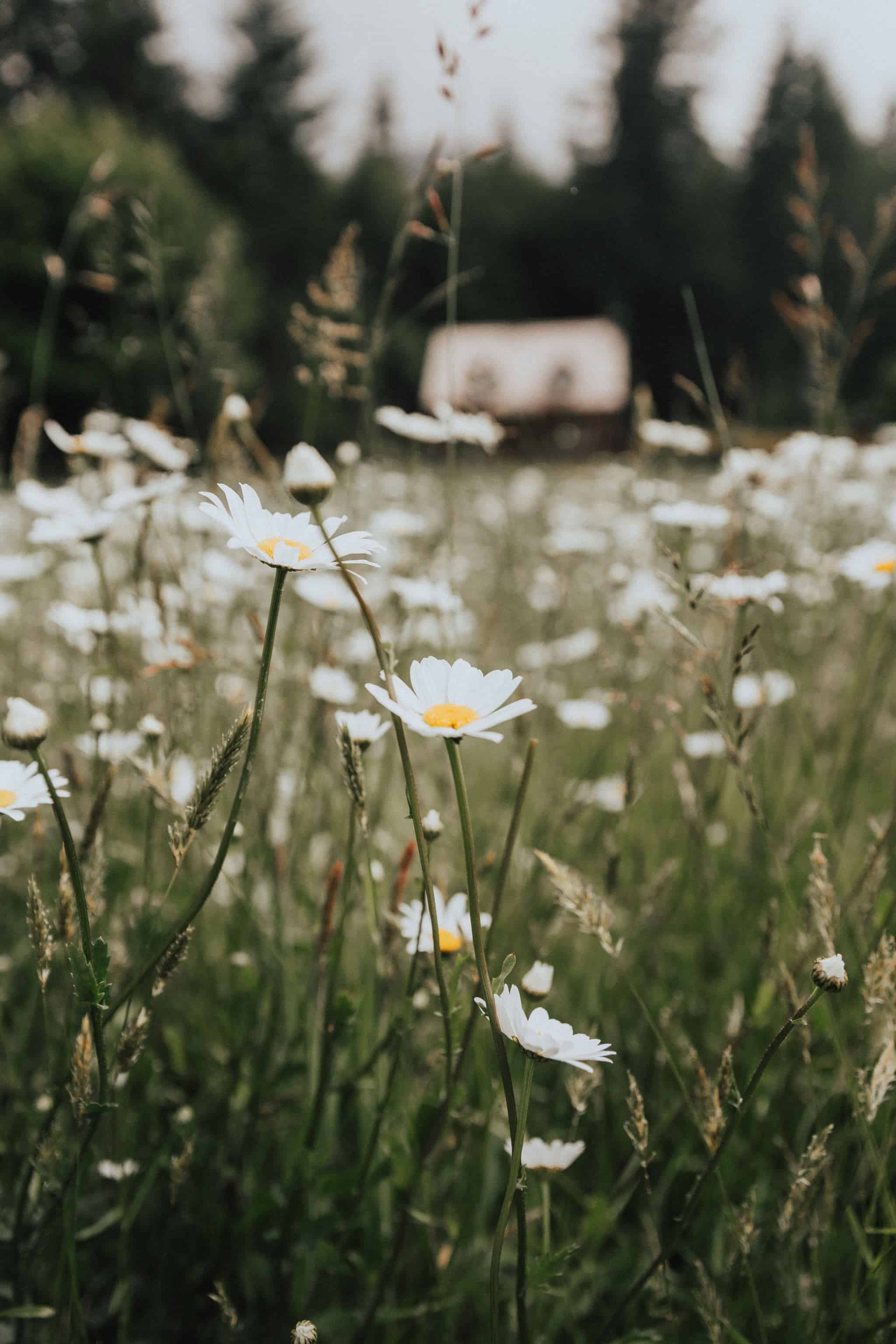
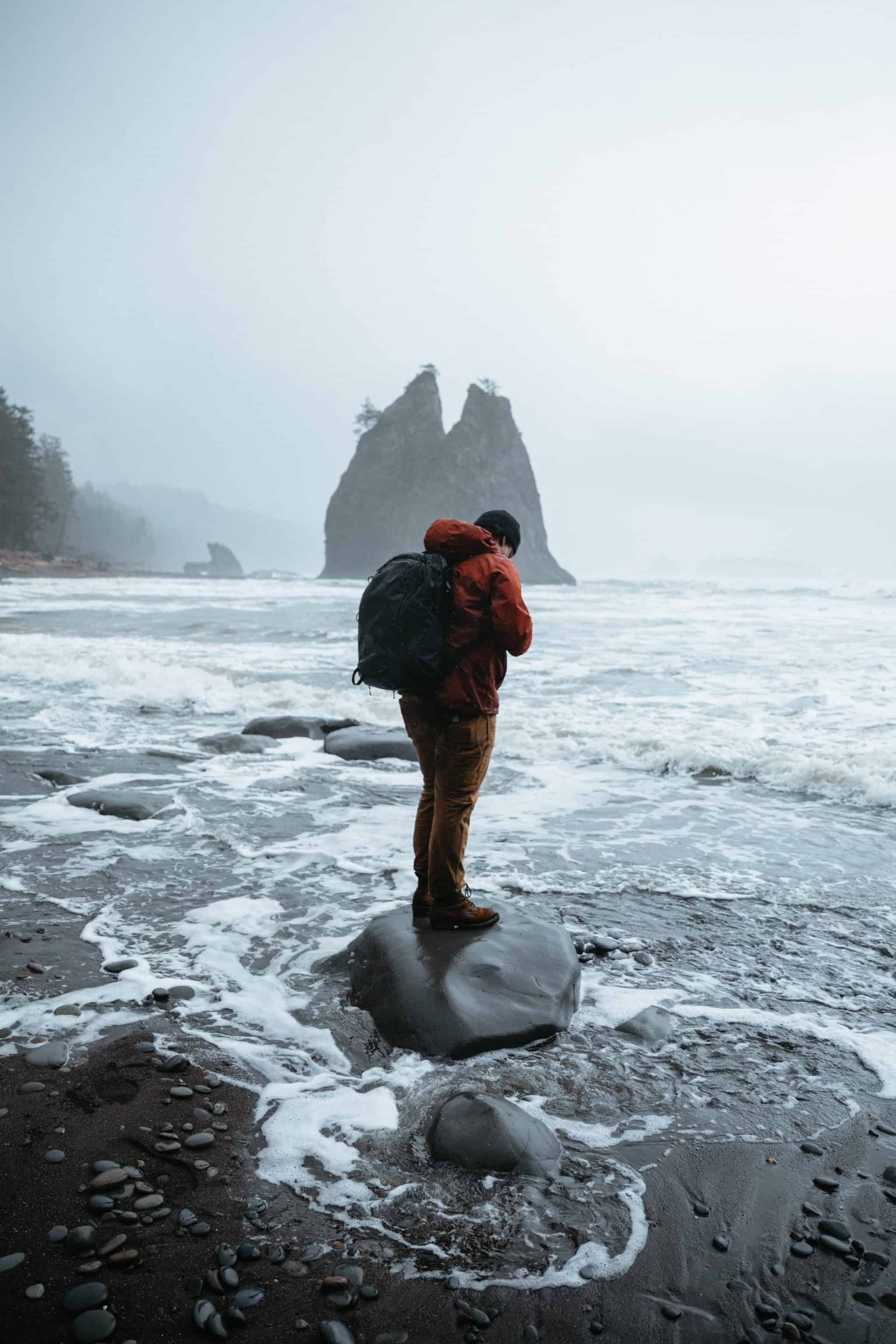
When Is The Best Time To Visit Olympic National Park?
The Olympic National Park has plenty of seasonal activities! However, it’s undeniable that the most popular time to visit is in the summer season. Crowds are inevitable, but the advantage of the summer season is that nearly everything is open and available to experience!
In the winter season, Hurricane Ridge is open for snowshoeing on the weekends, and most of the Washington coast is shrouded in clouds for a moody and dramatic vibe and some awesome opportunities for Olympic National Park photography.
The winter season in the Olympics has its perks and disadvantages, just like any other season. You’ll experience far fewer crowds, but only a limited number of attractions are open!
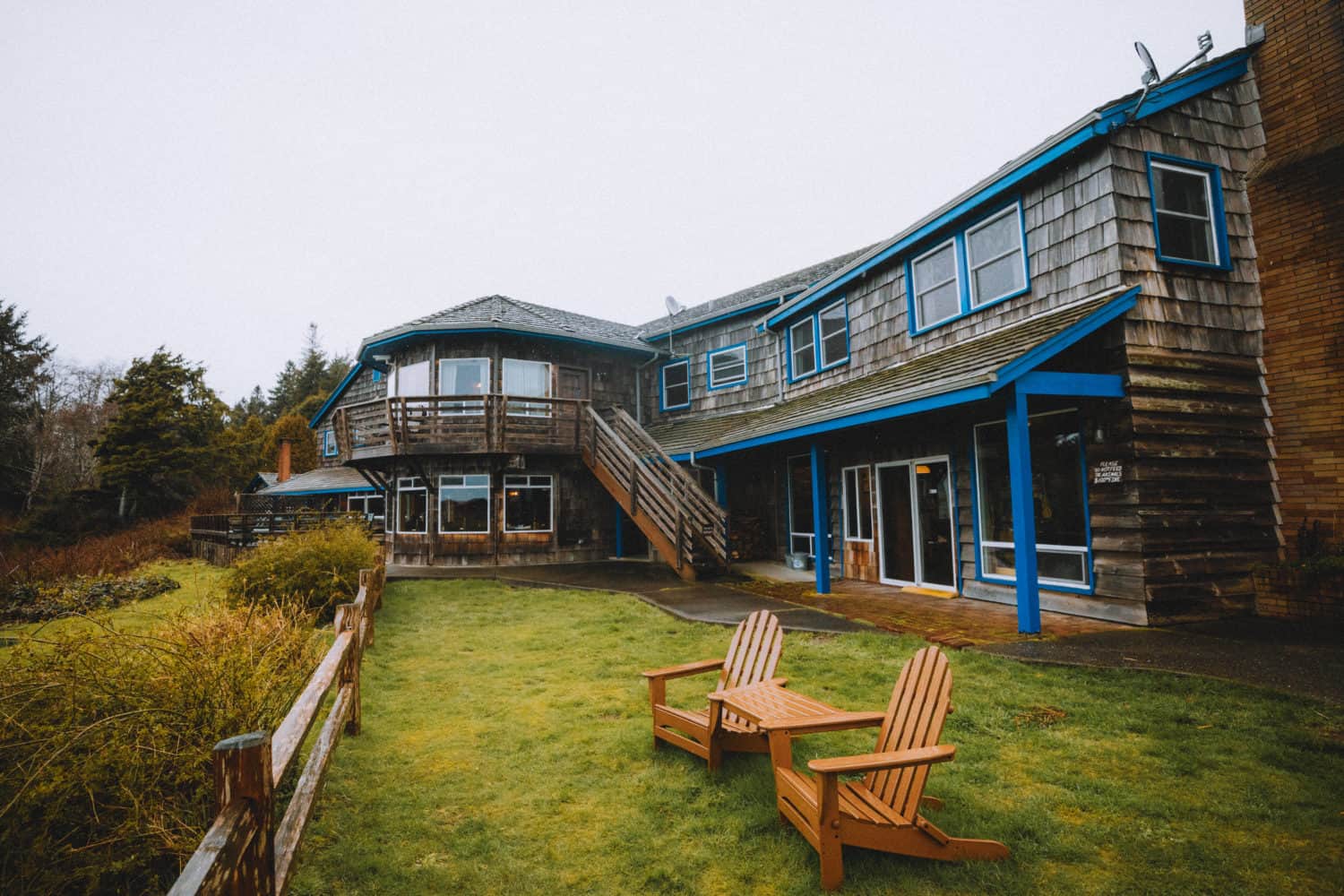
Where To Stay In Olympic National Park
There are several awesome places to stay in Olympic National Park, both inside the park borders and outside. If you’re taking a weekend getaway from Seattle, this is a fun way to experience a lot of unique places to stay on the Olympic Peninsula – perfect for relaxing!
Here are some of our favorite Olympic Lodges and resorts, based on personal experience or recommendations from people we trust:
Kalaloch Lodge (near the Tree of Life!) – Kalaloch (Right on the water, but no-wifi avaiable)
Woodland Inns – Forks, Washington (tiny cabins right in town, close to everything in Forks, sleeps 4)
Olympic Lodge – Port Angeles, WA – (Really cool lodge near downtown and restaurants)
Read the full guide: All The Best Places To Stay Near Olympic National Park
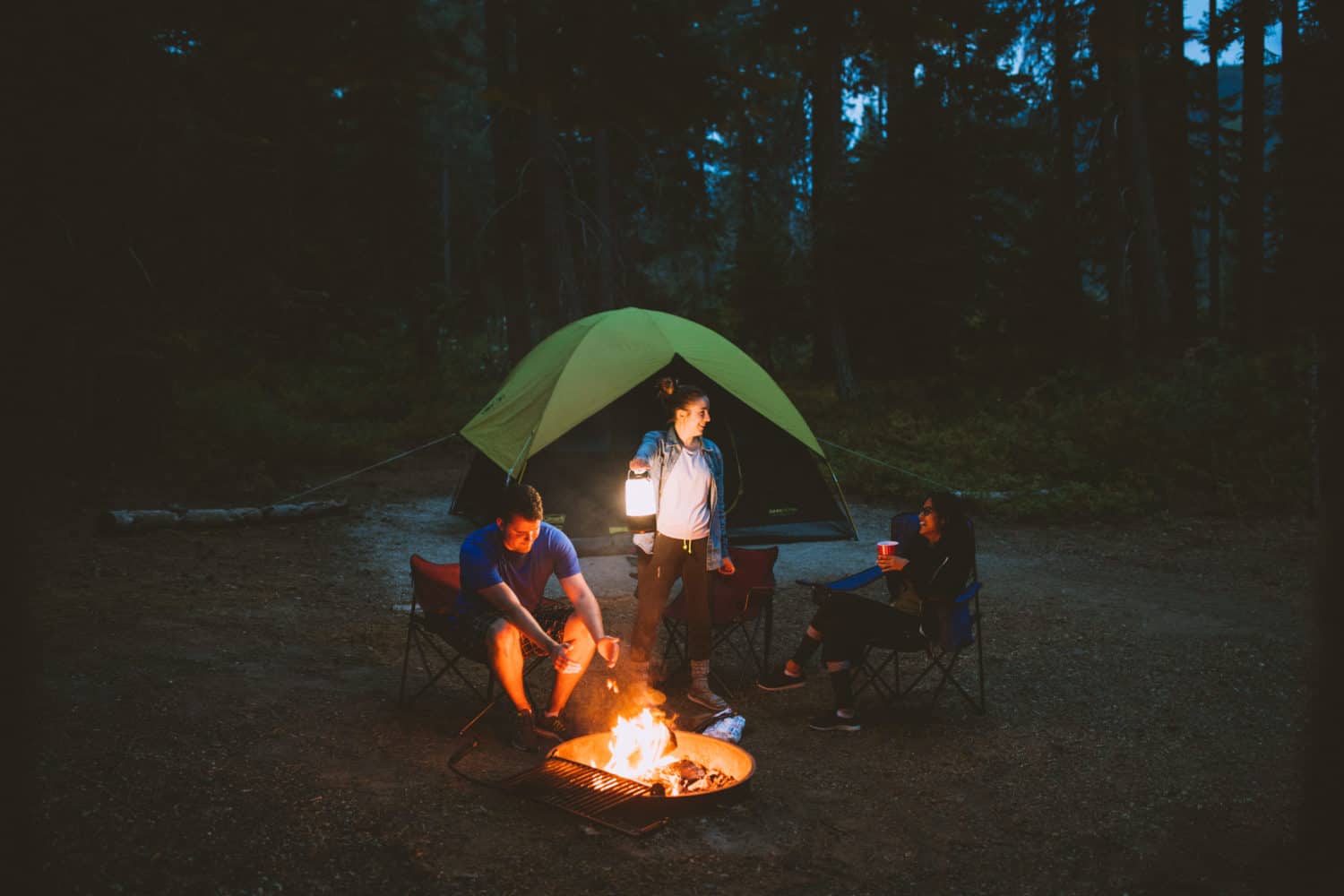
Camping In Olympic National Park
There are several amazing campsites in Olympic National Park to reserve, if you are looking to spend a little more time in nature. Sol Duc Campground, Kalaloch Campground, and Mora Campground are the only ones that take reservations, and all other Olympic National Park campsites are on a first-come-first-serve basis.
Some of the campgrounds that are closest to our favorite things to do in Olympic National Park include…
- Fairholme Campground (Near Lake Crescent, Sol Duc Falls)
- Mora Campground (Near Rialto Beach, La Push Beaches)
- Staircase Campground (tons of hikes in the SW Region, Lake Cushman)
- Hoh Rainforest Campground (Rainforest hikes, Hall of Mosses)
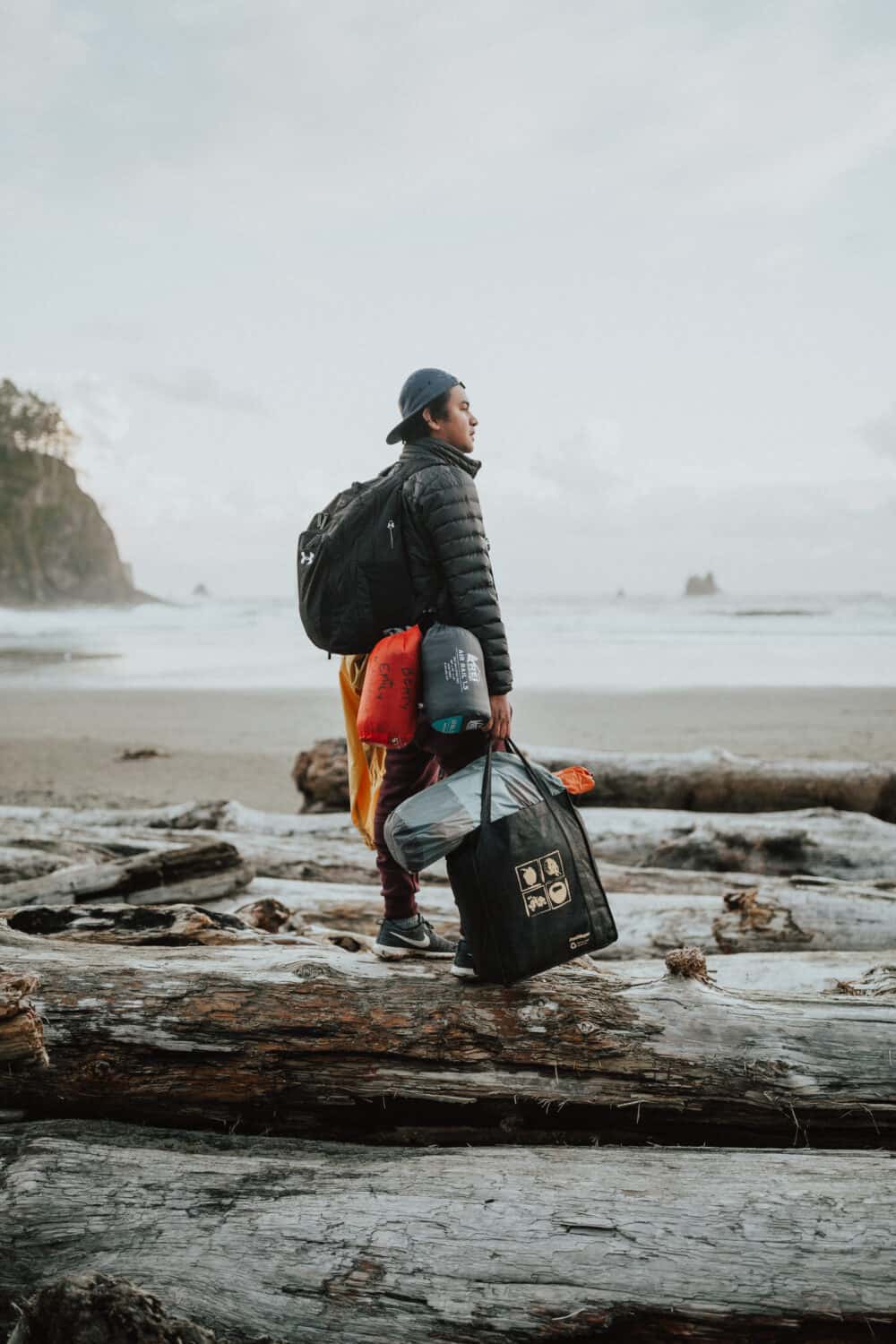
Once you are at your site, it’s up to you how to set up your campsite! Make a comfy bed and sleep in your car and maybe even try these car camping tricks. We also wrote a post about super quick and simple camping meals to make, so you can spend as much time exploring the Olympic National Park as possible.
You can also use our camping checklist to plan out the most epic set up, including everything from a portable stovetop, the comfiest chairs, and some of our favorite camping gear recommendations.
It’s also important to note that the weather in the Olympic National Park can get rainy, so make sure you are prepared for camping in the rain, too!
Read More: The Ultimate Guide To Camping In The Pacific Northwest
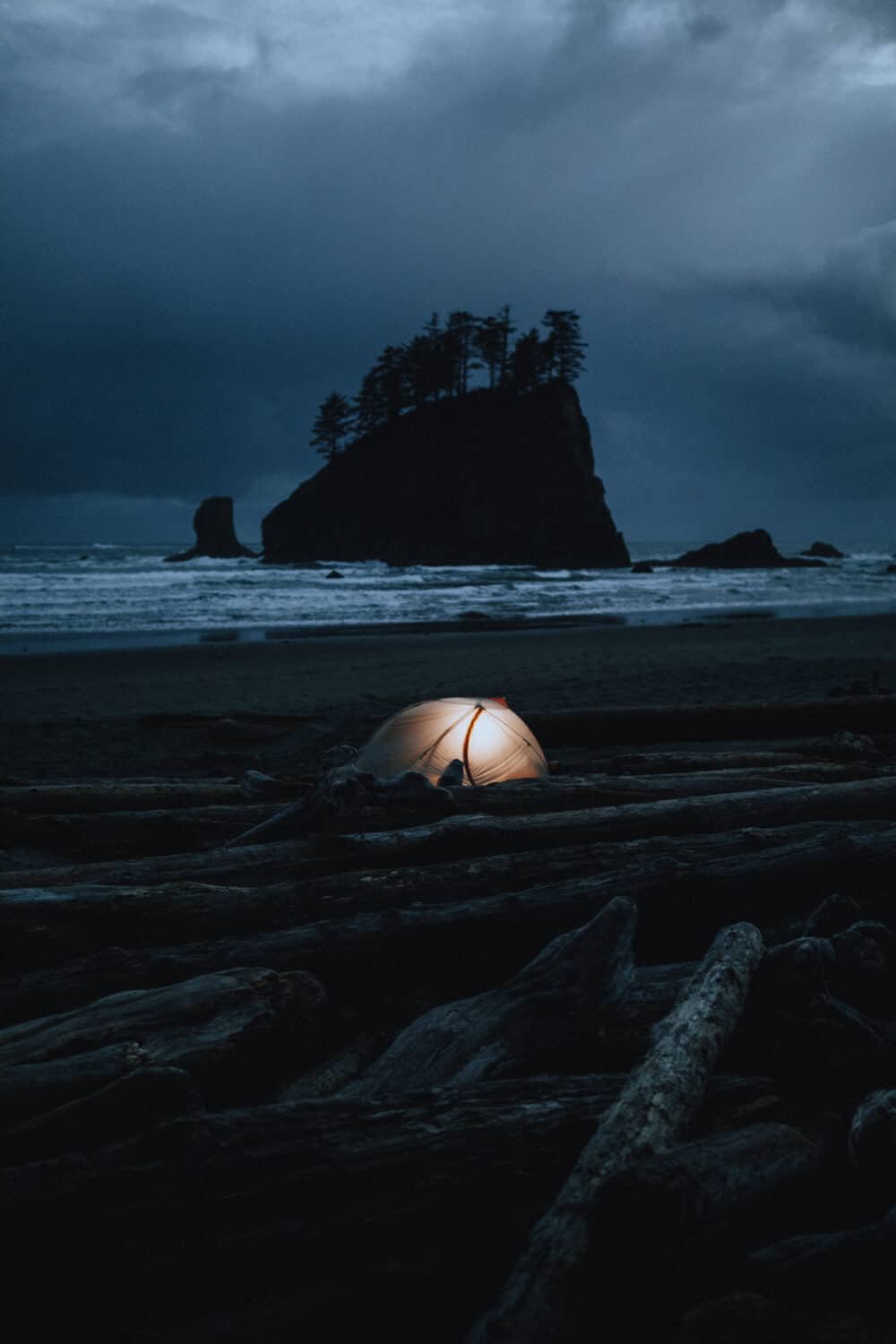
Want an ONP Secret?
Some of the coolest campsites in Olympic National Park are actually backpacking sites!
Beach camping on La Push, backpacking on the High Divide, or an overnight trip to The Ozette Loop require permits from the Wilderness Information Center. Make sure to reserve online or stop by the WIC to pick up the proper passes before your hike.
Read More: How To Go Beach Camping at La Push (And Other Washington Beach Campsites)
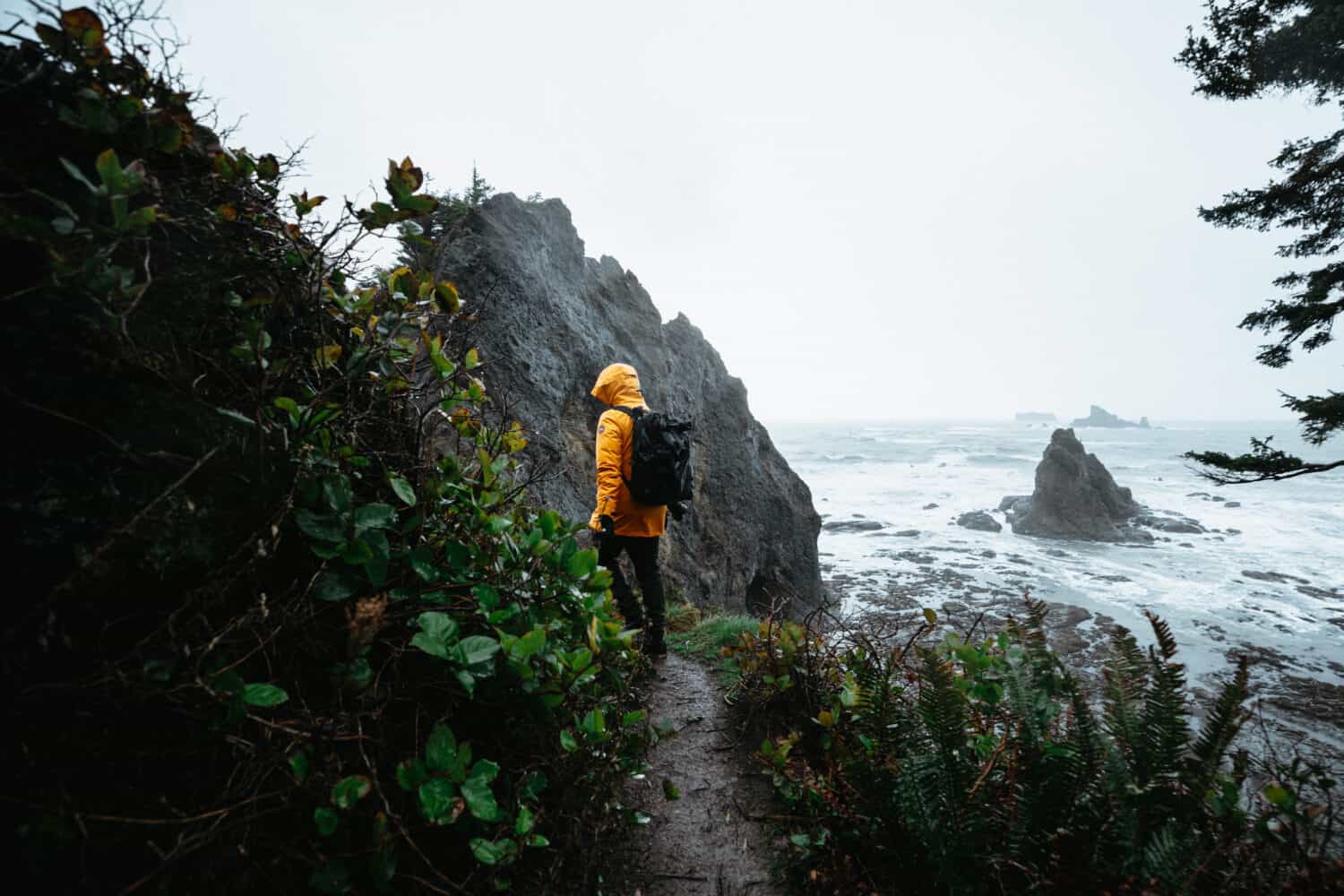
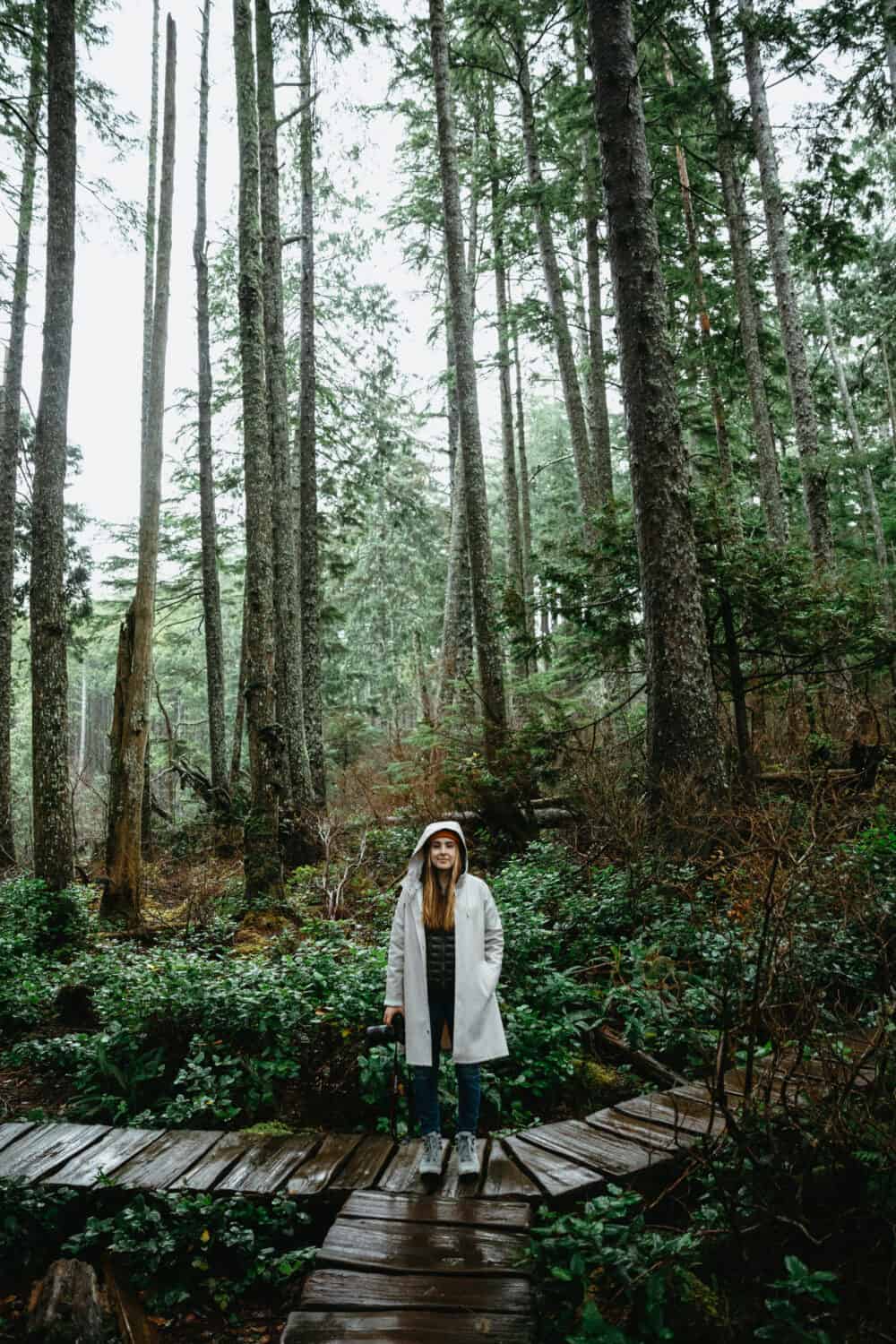
What To Pack For A Trip To Olympic National Park
Rain Jacket: This is probably the most essential piece of gear you can pack for an Olympic National Park trip. We own this rain jacket and it’s lightweight – perfect for stowing away in a daypack.
Rain Boots: Rain boots are not just for rainy days, but an excellent footwear choice for exploring tide pools and parts of the Olympic National Park beaches! We love these Bogs for the easy slip-on grips.
Day Bag: We switch between our WANDRD bags for our camera gear, and these lightweight Cotopaxi ones for day hikes.
Water Bottle: Rain or shine, water is important to pack! Choose a Hydroflask to keep your drinks cool, with a ton of colors to choose from!
Hat: You can still get a sunburn through the clouds, so it’s always a good idea to protect your head. Choose an epic felt adventure hat for some style, or a waterproof one like this!
Camera: Capture your Olympic National Park activities for epic memories later! Here are 8 tips on how to take better travel photos.
Layers: Mornings in the Olympic National Park can start off cold, then quickly warm up by the afternoon. Wear plenty of layers so you can take them off as the day warms up!
Bear Spray: If you are taking backcountry hikes, or going on multi-day hikes, we highly recommend packing bear spray for protection!
Bug Repellent: With several lakes, waterfalls, rivers, and rainforest surrounding the park, bug spray is an absolute essential for summer trips to Olympic National Park. You can also choose to wear a bug hat like this one from Outdoor Research, for keeping them out of your face!
Good Socks: For longer hiking trails in the Olympics, make sure you are wearing the correct socks. We suggest these wool ones from Smartwool for reduced blisters and better sweat-wicking ability!
Want the full list? The Complete Olympic National Park Packing List (All the essentials!)
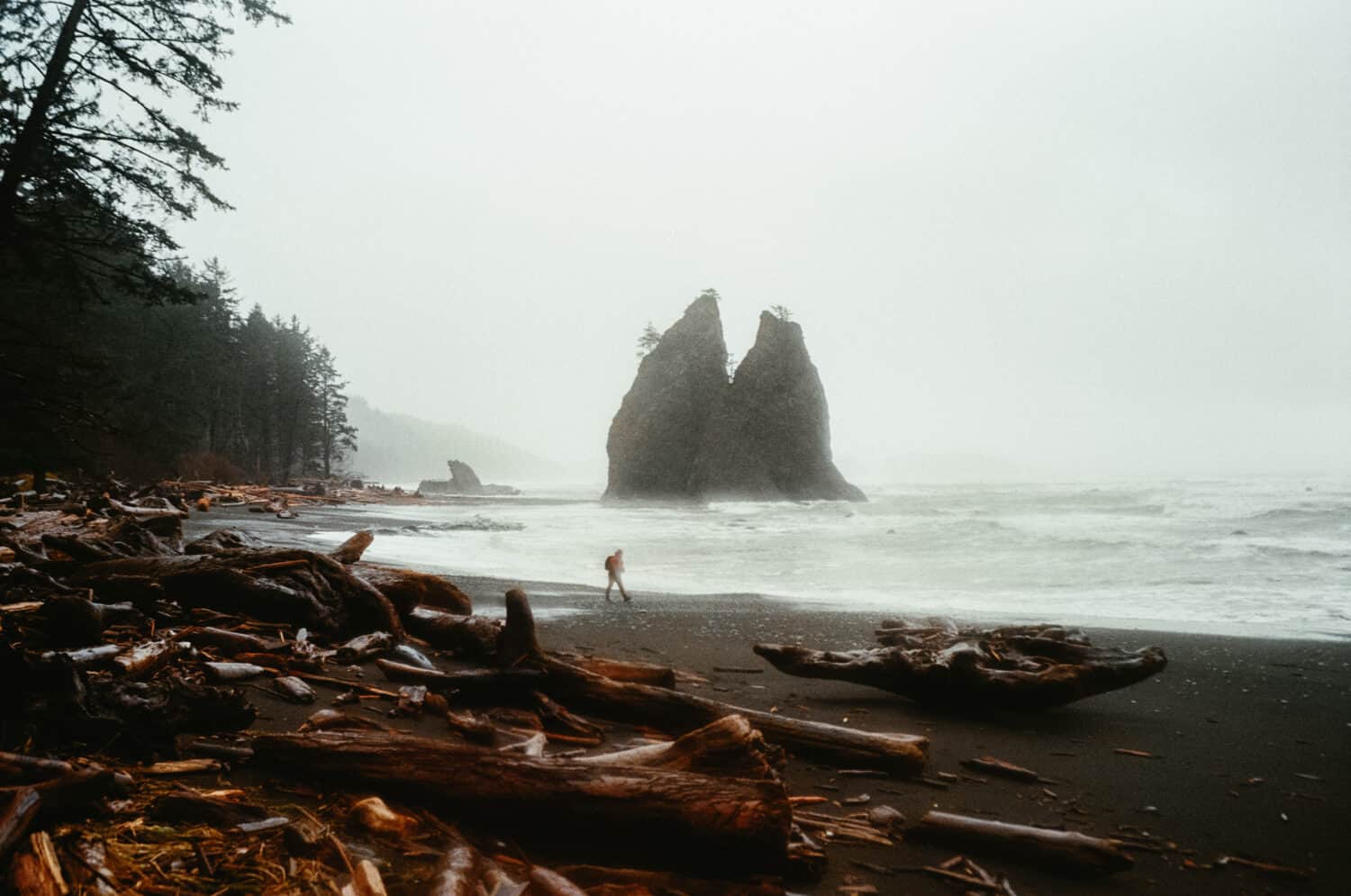
Olympic National Park Regional Breakdown
In this post, we’re breaking down all the amazing things to do in Olympic National Park into sections. We’ll be sharing our favorites activities to do in each section of the park. This way, you can get a better idea of what areas to explore, and what you can expect in each place!
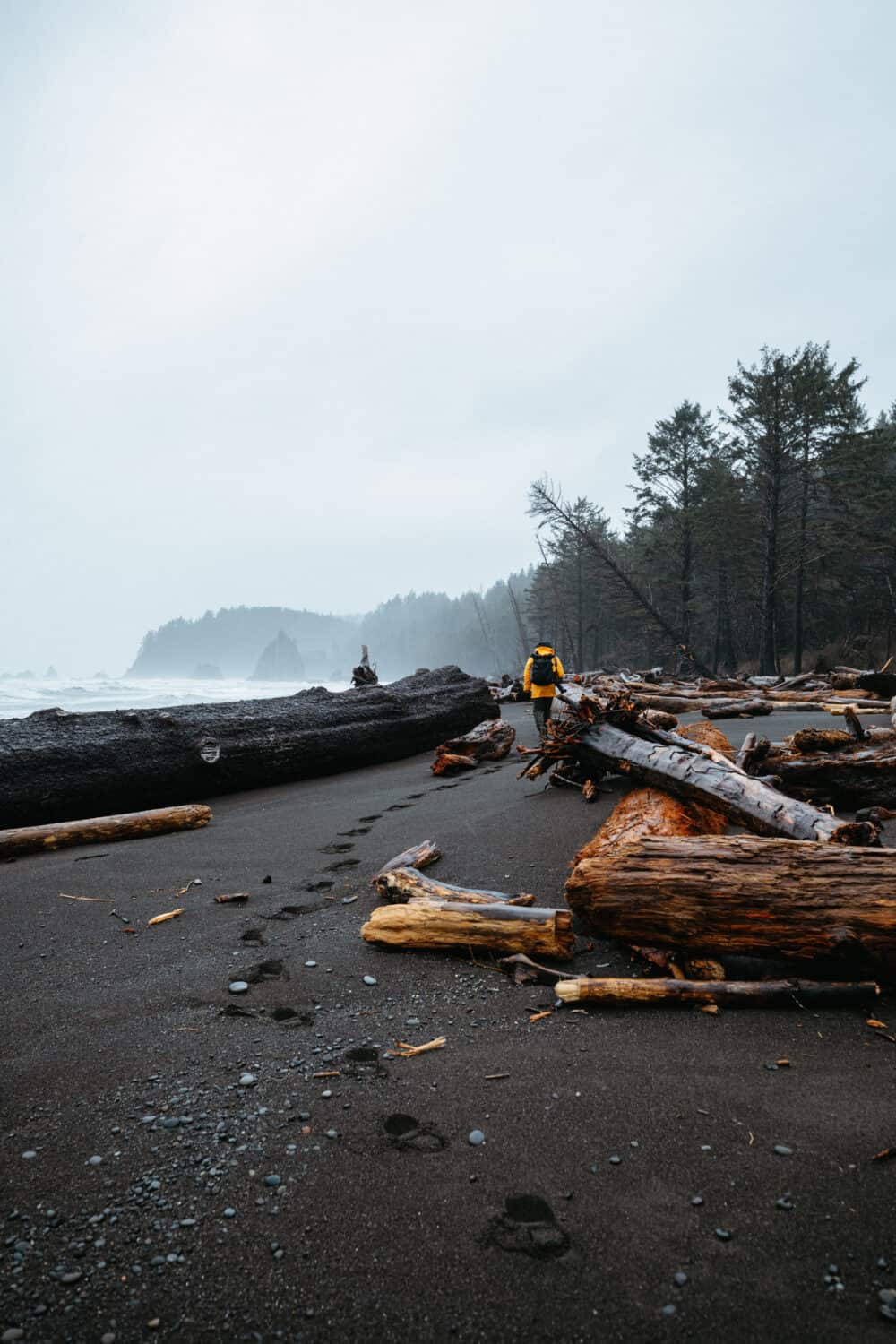
Pacific Coastline Area
The Pacific Coastline area of the Olympic National Park is unmistakably filled with gorgeous rocky beaches, hidden coves, and lots of opportunities for adventure. We’re sharing our favorite places to explore in the Olympic National Park along the ocean’s edge!
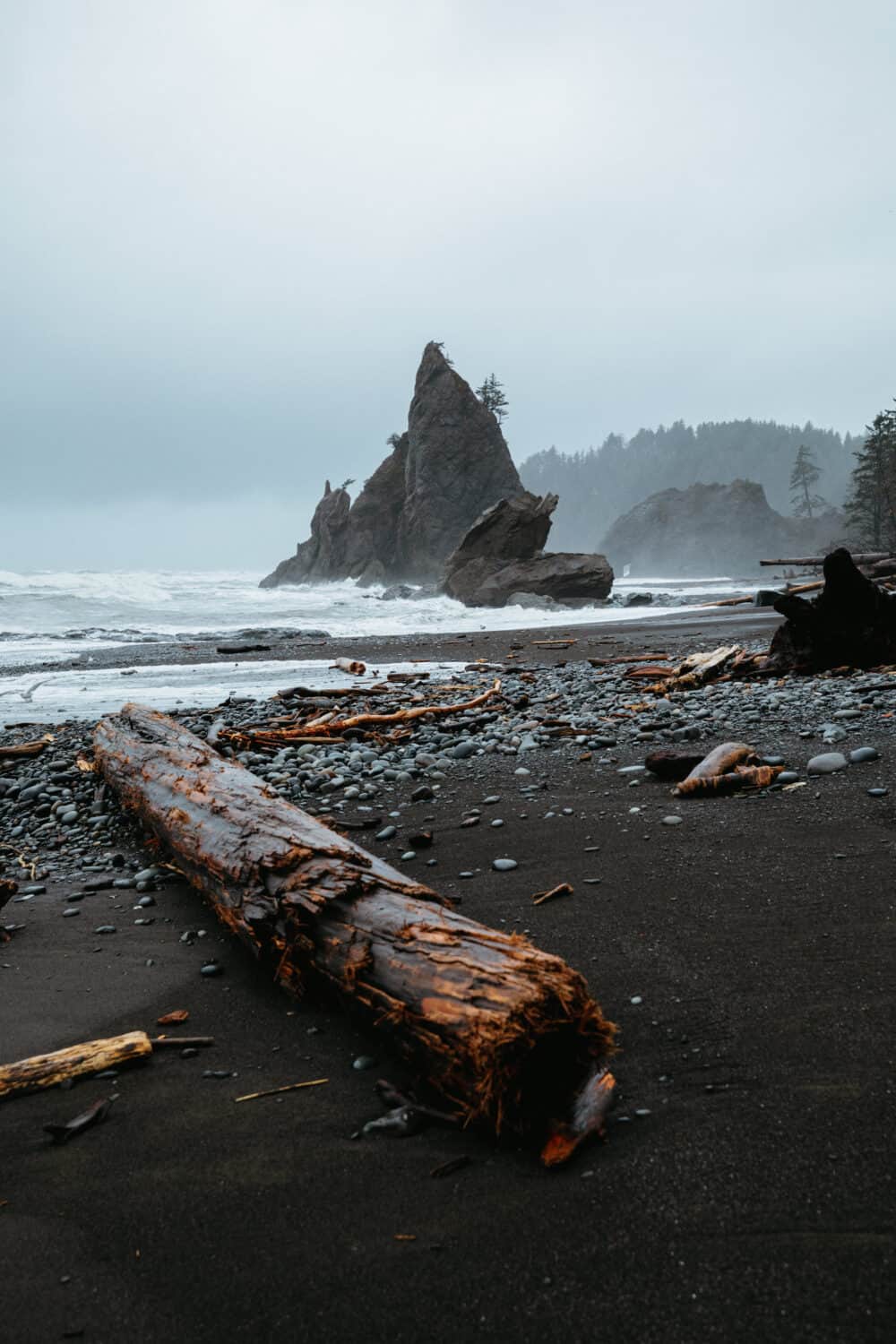
Rialto Beach
Rialto Beach is probably one of our all-time favorite places to go in the Olympic National Park!
From the sun-bleached driftwood to the endless beachside walks, this is an adventure-lovers beach for sure. Rialto Beach is also a popular place for beach camping in Washington.
Just hike past Ellen Creek and pick up a permit from the WIC in Port Angeles and you can take your pick of the many gorgeous camping spots scattered along the shore!
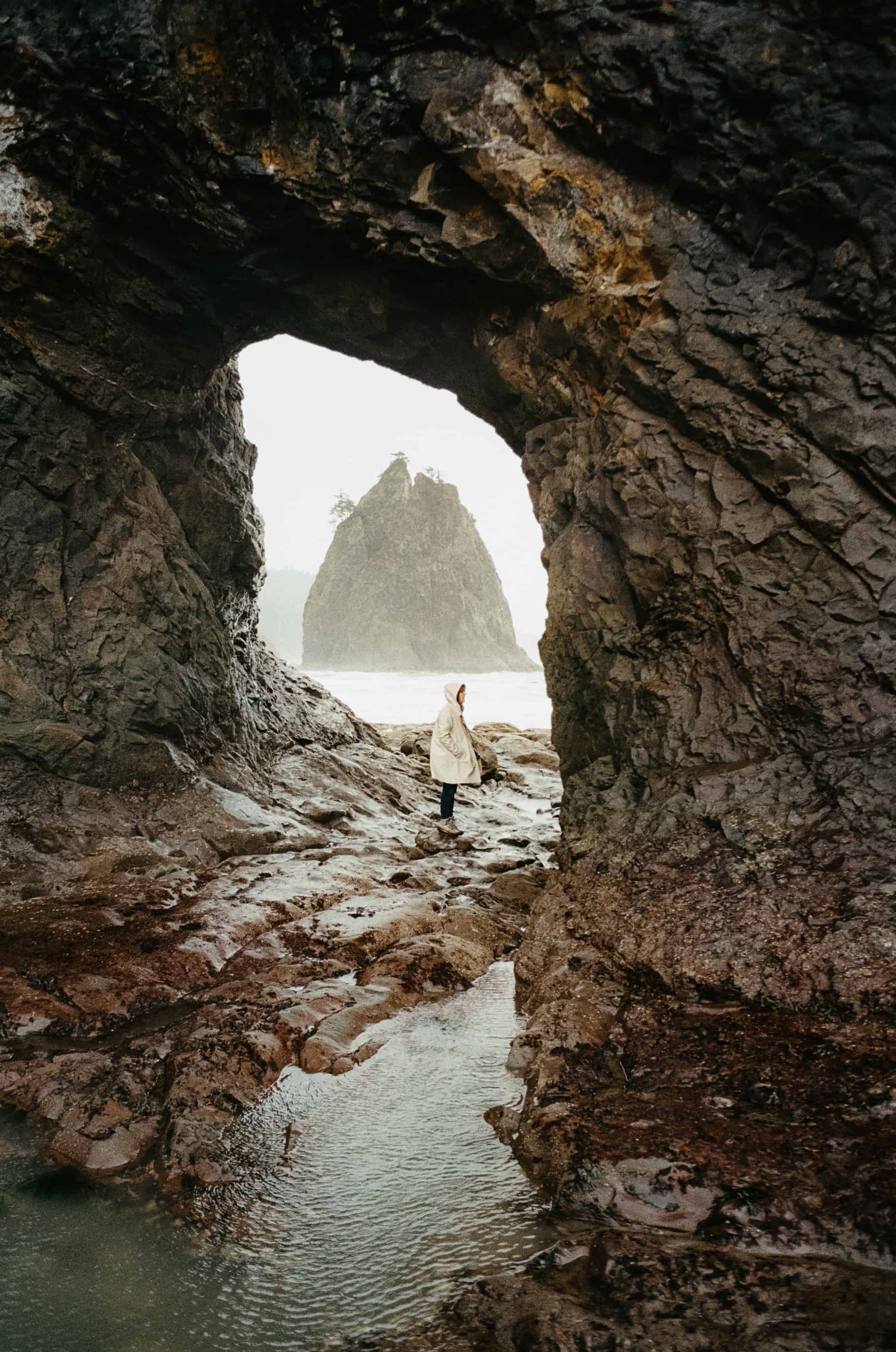
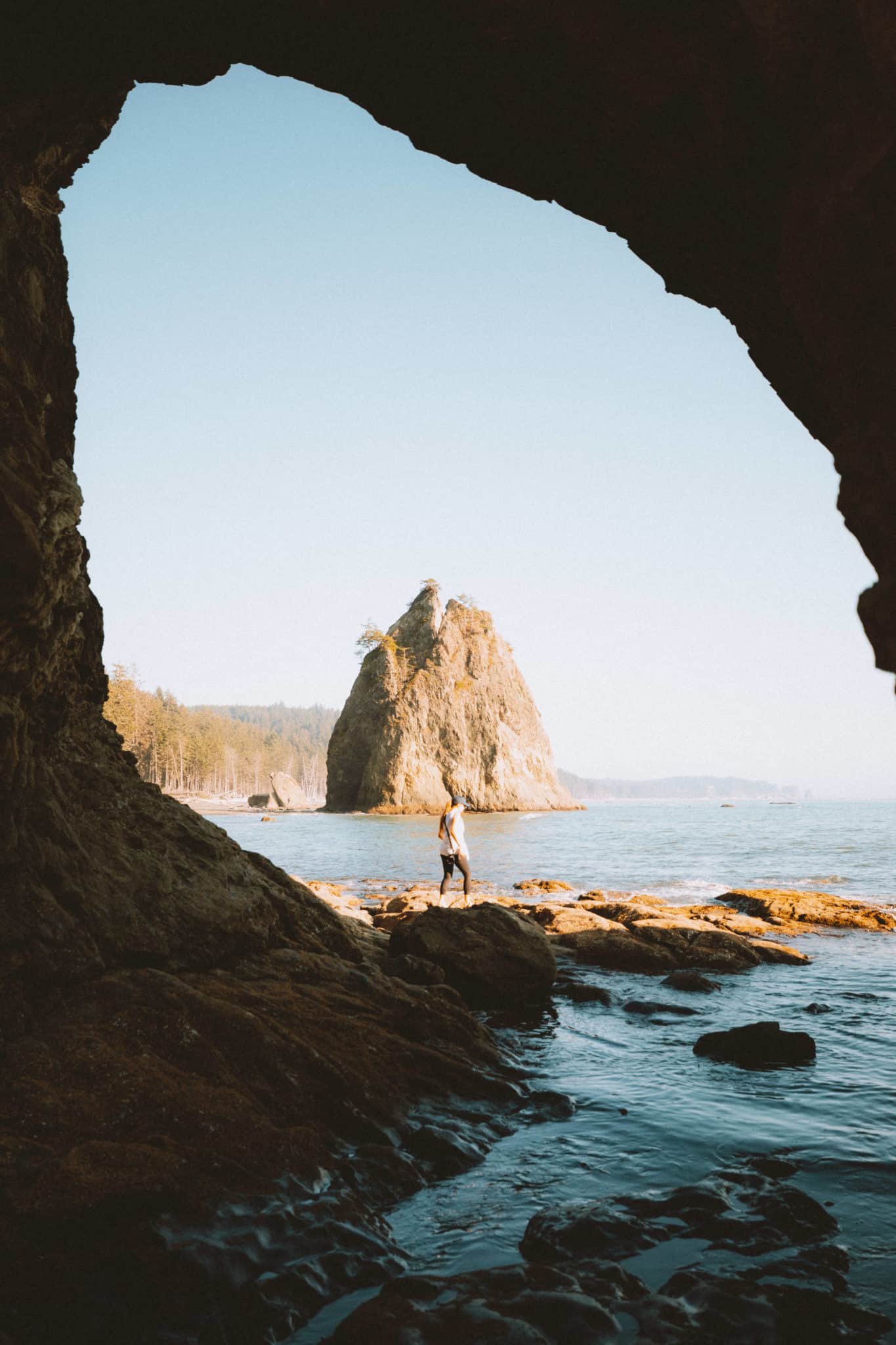
We especially love hiking the Hole-In-The-Wall trail at Rialto Beach, a 1.5-mile trip to see one of Washington’s most Instagram-able spots. Make it out to walk through a literal hole in the rock, and climb up to the top for one of the best views on the beach!
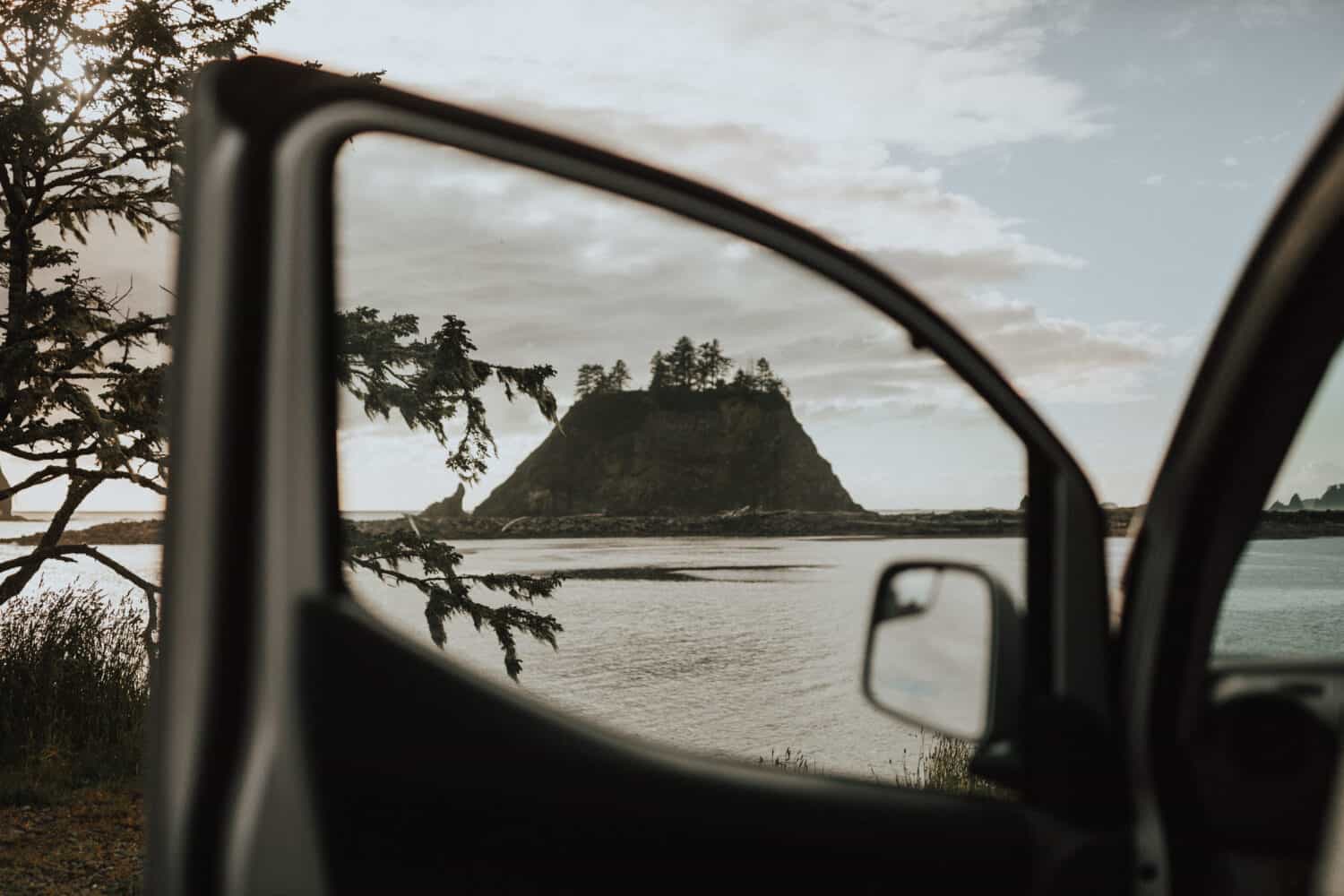
La Push Beaches (First Beach, Second Beach, Third Beach)
Near Rialto Beach (we’re talking a 10-minute drive away) is the series of La Push Beaches, ready to be explored when you visit Olympic National Park.
First Beach is the most easily accessible of these Washington beaches. Here, you can explore nearby tide pools, and enjoy views of the prominent sea stacks just offshore.
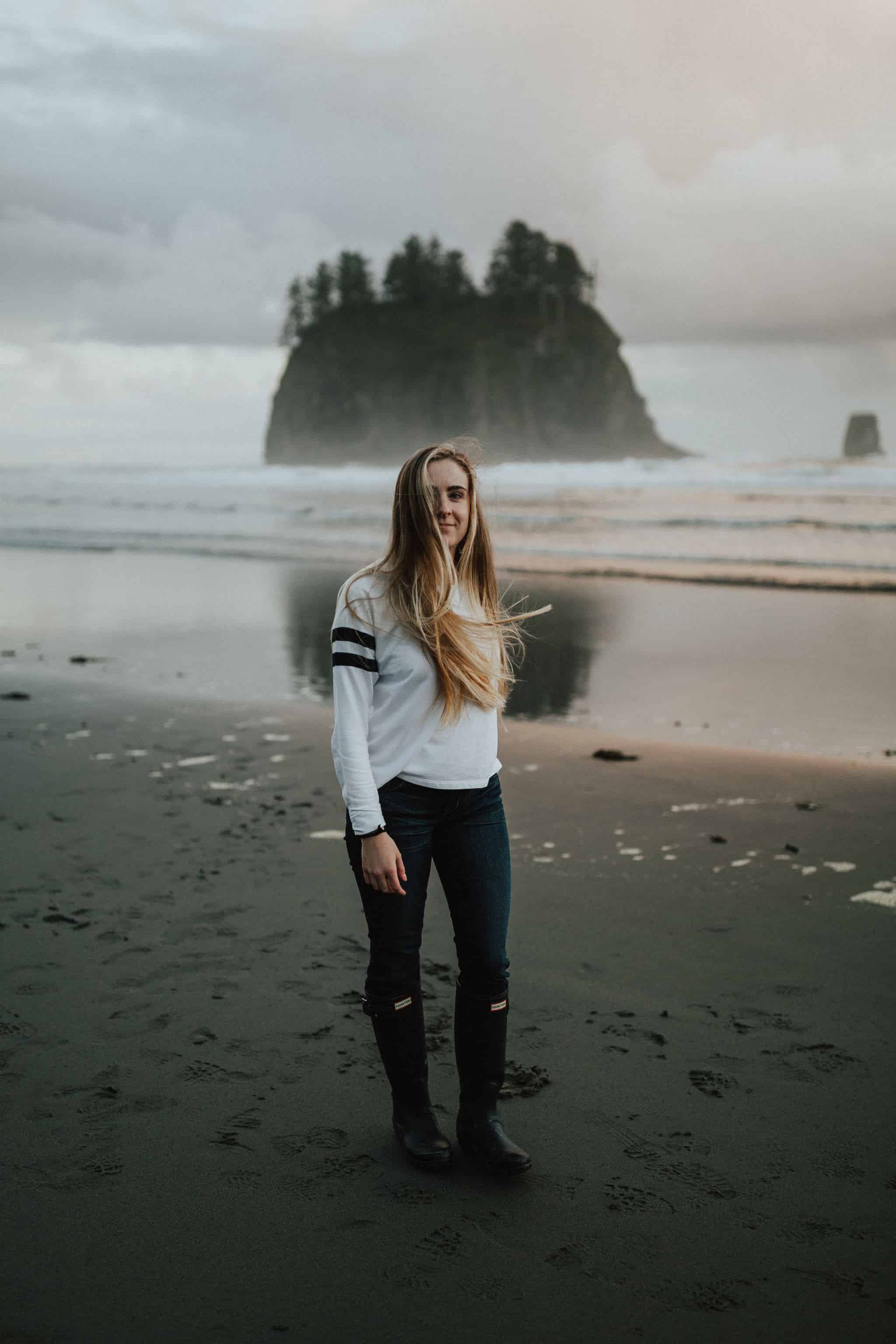
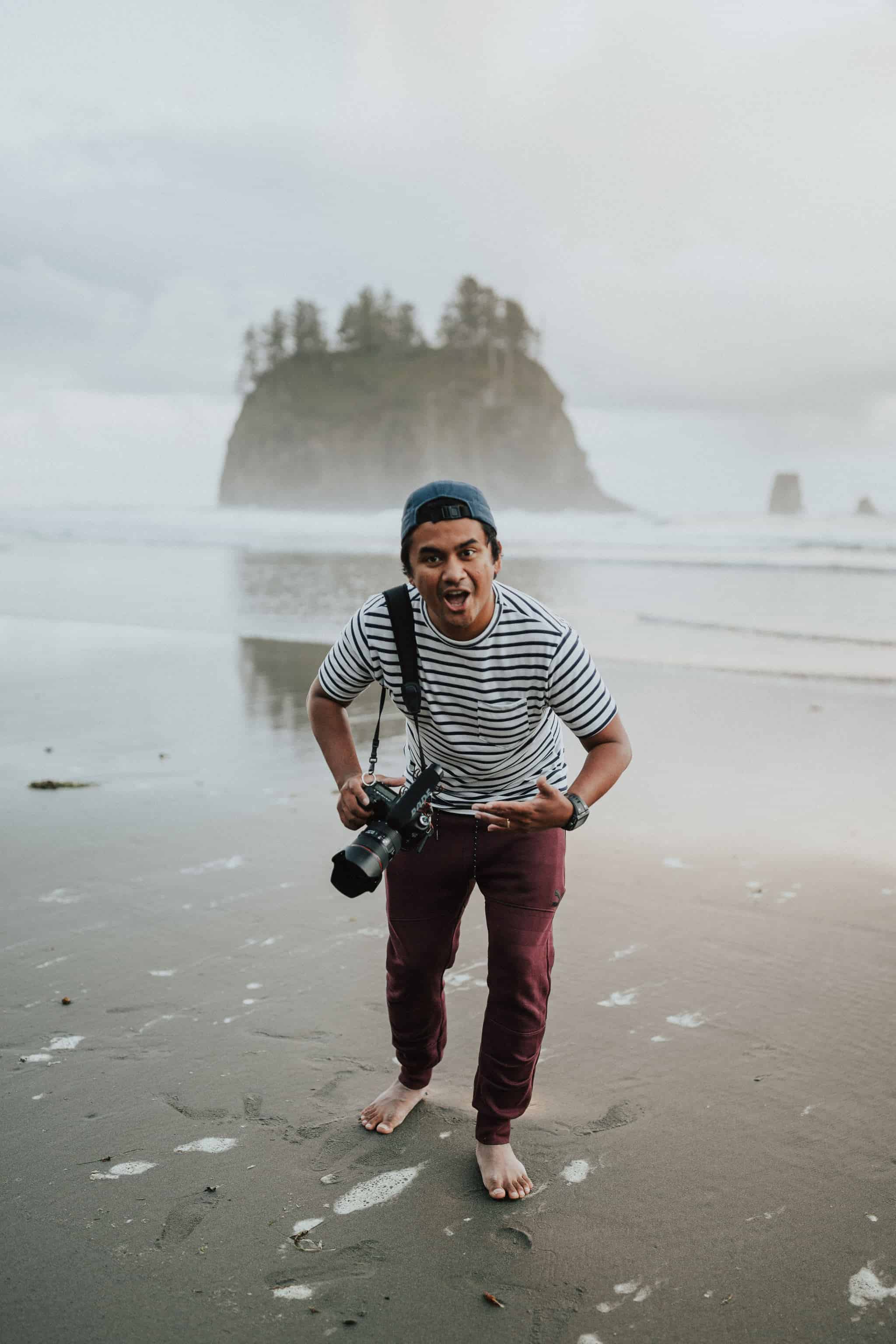
Second Beach is the most popular of the three La Push Beaches, specifically for its picturesque sunsets and beach camping opportunities. This beach requires a 15-minute hike to its shores, so make sure not to leave valuables in your car!
Third Beach is the least visited of the three La Push Beaches, requiring a 3.6-mile Washington coast hike. Often times, this beach is shrouded in fog for a perfectly classic Pacific Northwest experience.
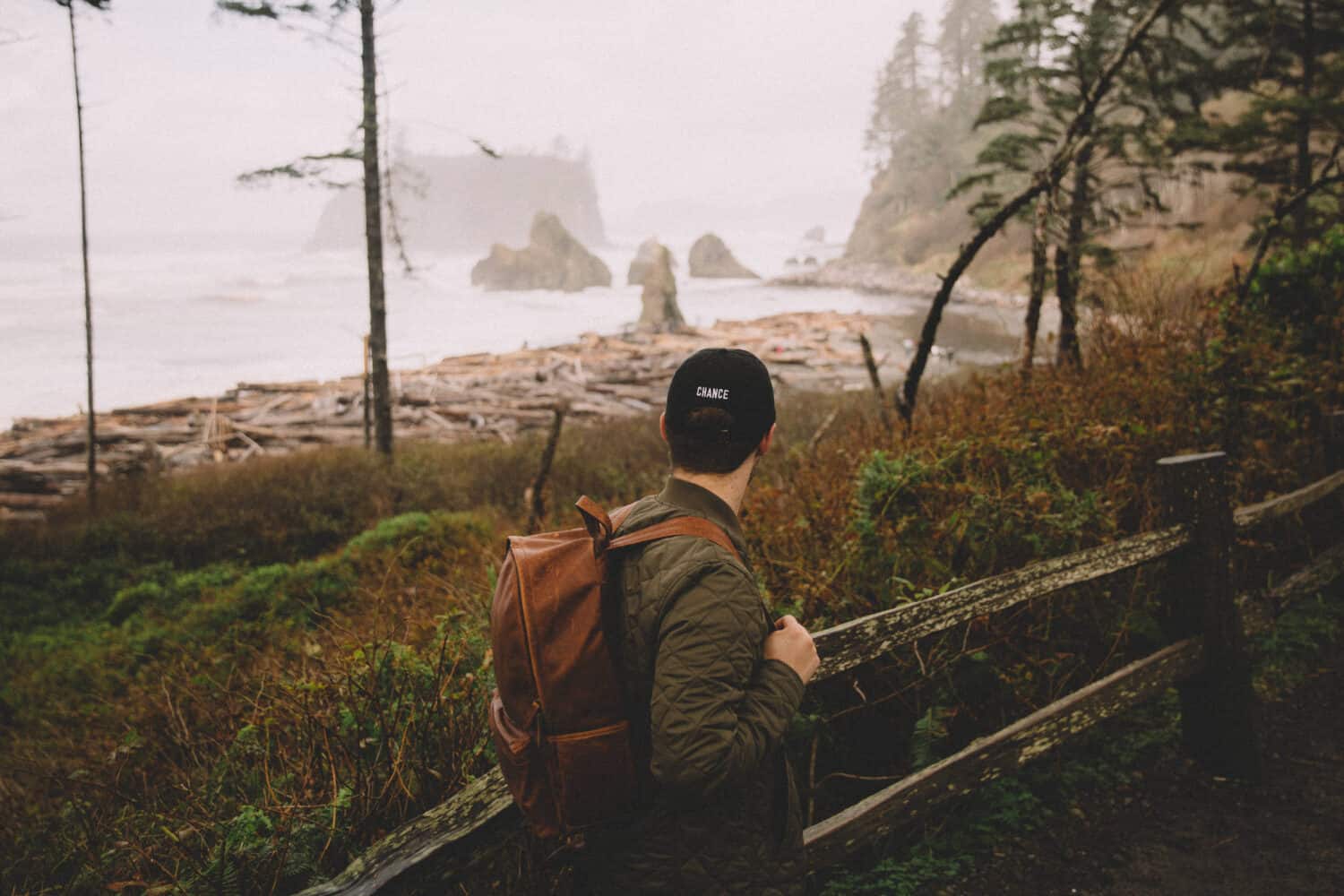
Ruby Beach
Ruby Beach is a perfect family-friendly Washington beach! The parking lot is located just off Highway 101, for easy accessibility. Additionally, with a simple hike down to the beach, it’s extremely easy to reach!
Here, there are interesting sea stacks close to shore, tide pools filled with marine life, and tons of driftwood ready for climbing. This Olympic National Park beach has a little something for everyone!
Olympic National Park Beach Tip: Come during low-tide to have the most access to this beach. We usually save this website in our browser (or take a screenshot!) to be informed of the times and tides.
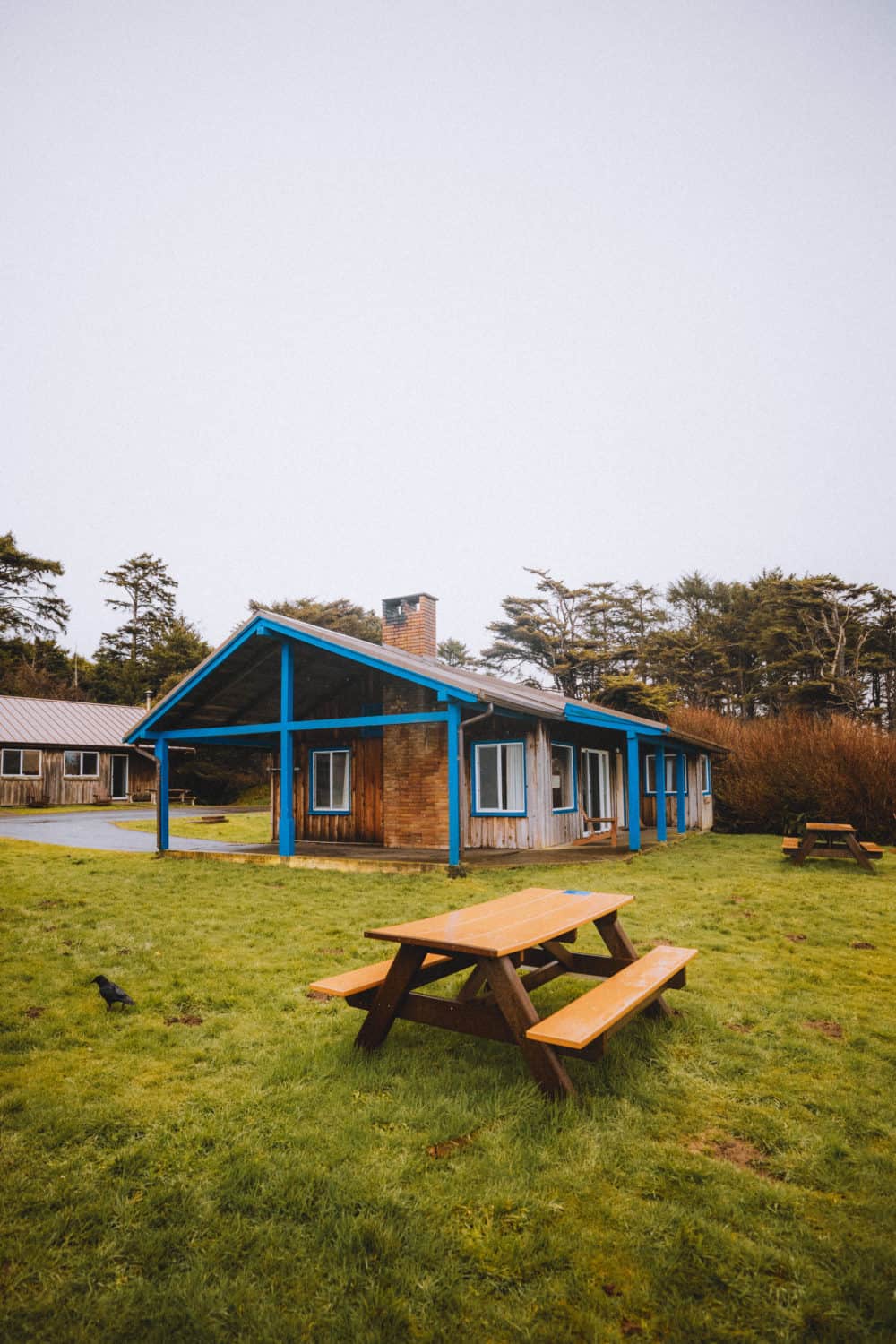
Kalaloch Lodge
The Kalaloch Lodge is one of four lodges in Olympic National Park that you can book! This lodge is located on the shores of the Washington Coast, with access to the water and convenient driving distances to plenty of beaches in the park.
You can recognize the lodge by its coastal aesthetic. Weathered shaker siding and blue trim match the cozy and cloudy Washington coast! The main lodge has rooms with a view and a restaurant for a dining experience next to the water.
You can also rent a standalone beachfront cabin for a more intimate experience with your whole family.
Nearby, one of the coolest things to do in Olympic National Park is to visit the Tree of Life. Just a quick drive north of the Kalaloch Lodge (we’re talking 5 minutes) is the Kalaloch Day Use Area, and a convenient staircase down to the shore makes this an easy destination for one of the best photo spots in Washington!
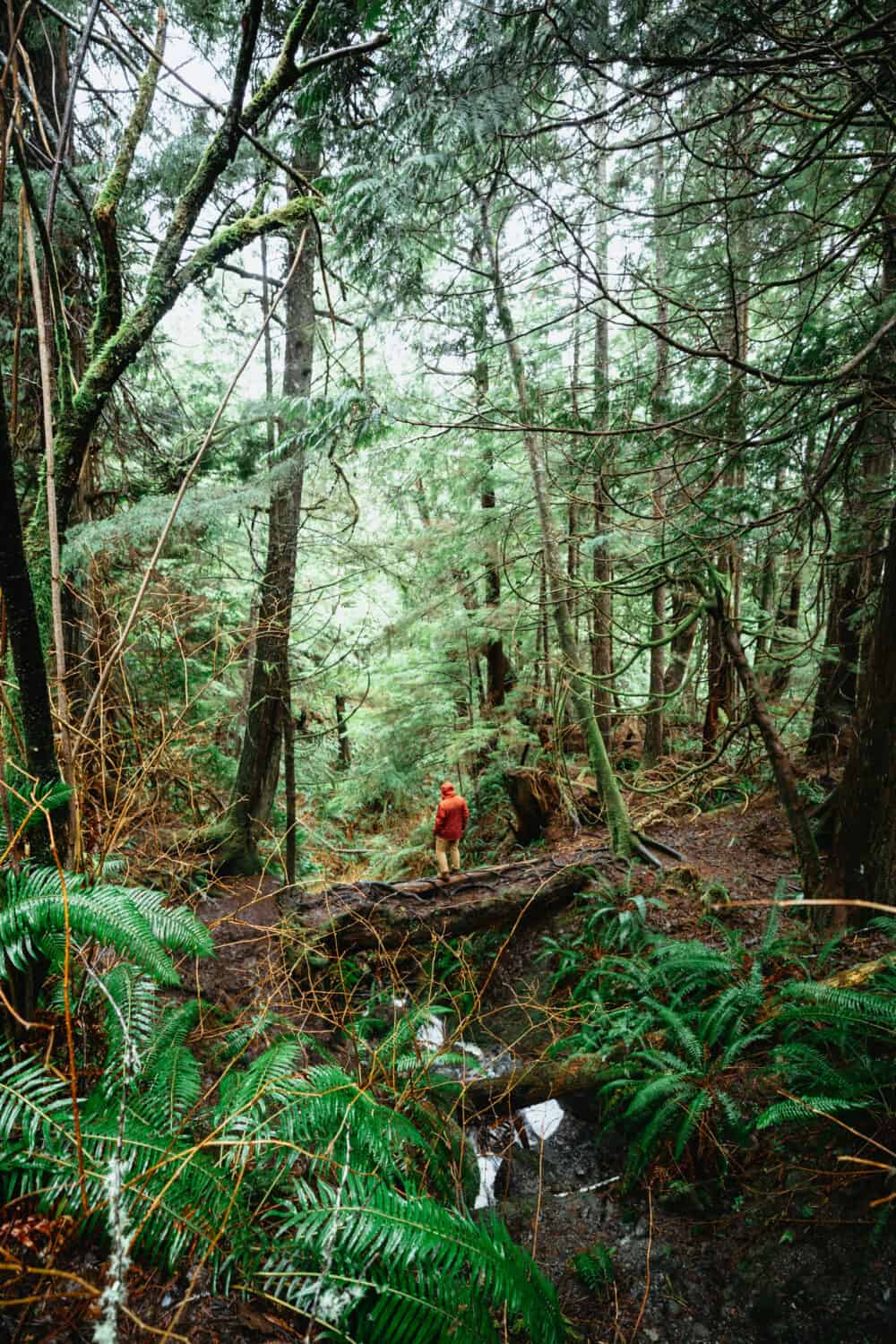
More Places To Go On The Washington Coast
Lake Ozette Area
Ozette Lake is located north of Rialto Beach, and south of Cape Flattery on the Washington coast. You can enjoy a simple day canoeing the lake, or you can opt to hike the longer loop (9.2 miles. You even camp at places like Cape Alava and Sand Point on the beach!
If you wish to camp along the Washington coast (and we highly recommend you do!) you must obtain a permit before you set off on your Washington coast camping trip. Spots are limited, items like bear canisters are required, and proper stewardship (like pooping where you are supposed to!) is essential.
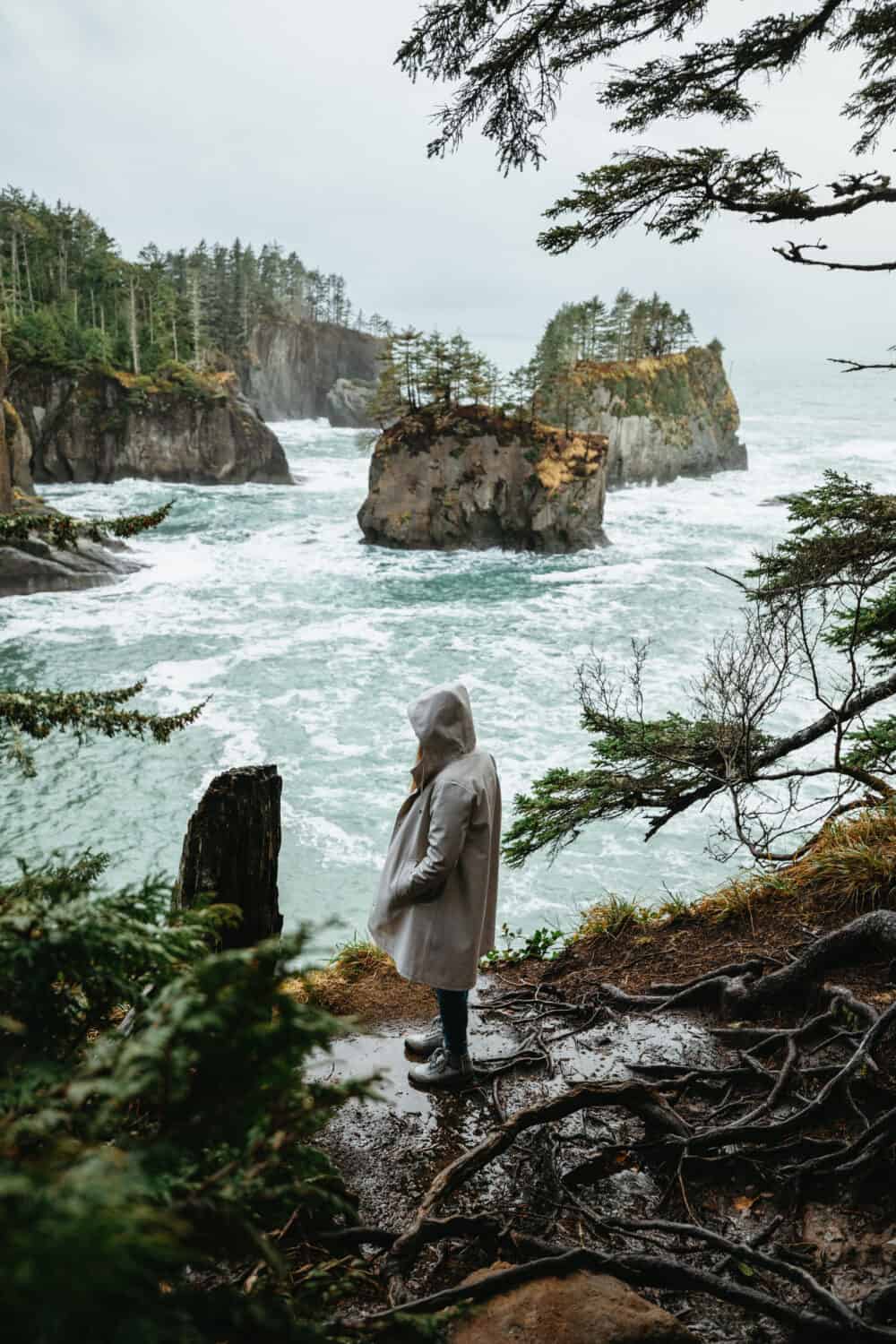
Cape Flattery
Commonly confused with being a part of Olympic National Park, Cape Flattery is actually on Makah Tribal Land. Located at the very northwestern corner of the contiguous United States, it’s still worth a stop on your Olympic Peninsula road trip!
Here, there are short trails and boardwalks to meander to the views. You will be able to see the vast Pacific Ocean and the Strait of Juan de Fuca.
Point of Arches / Shi Shi Beach
Day hikers can enjoy Shi Shi Beach / Point of Arches and their gorgeous mile-long procession of sea stacks that are scattered just offshore.
Reminder: For camping on the beach, hikers will need two passes (Makah Recreation Pass + Olympic Wilderness Permit). You will also need to pay $10 for parking! Plan accordingly!
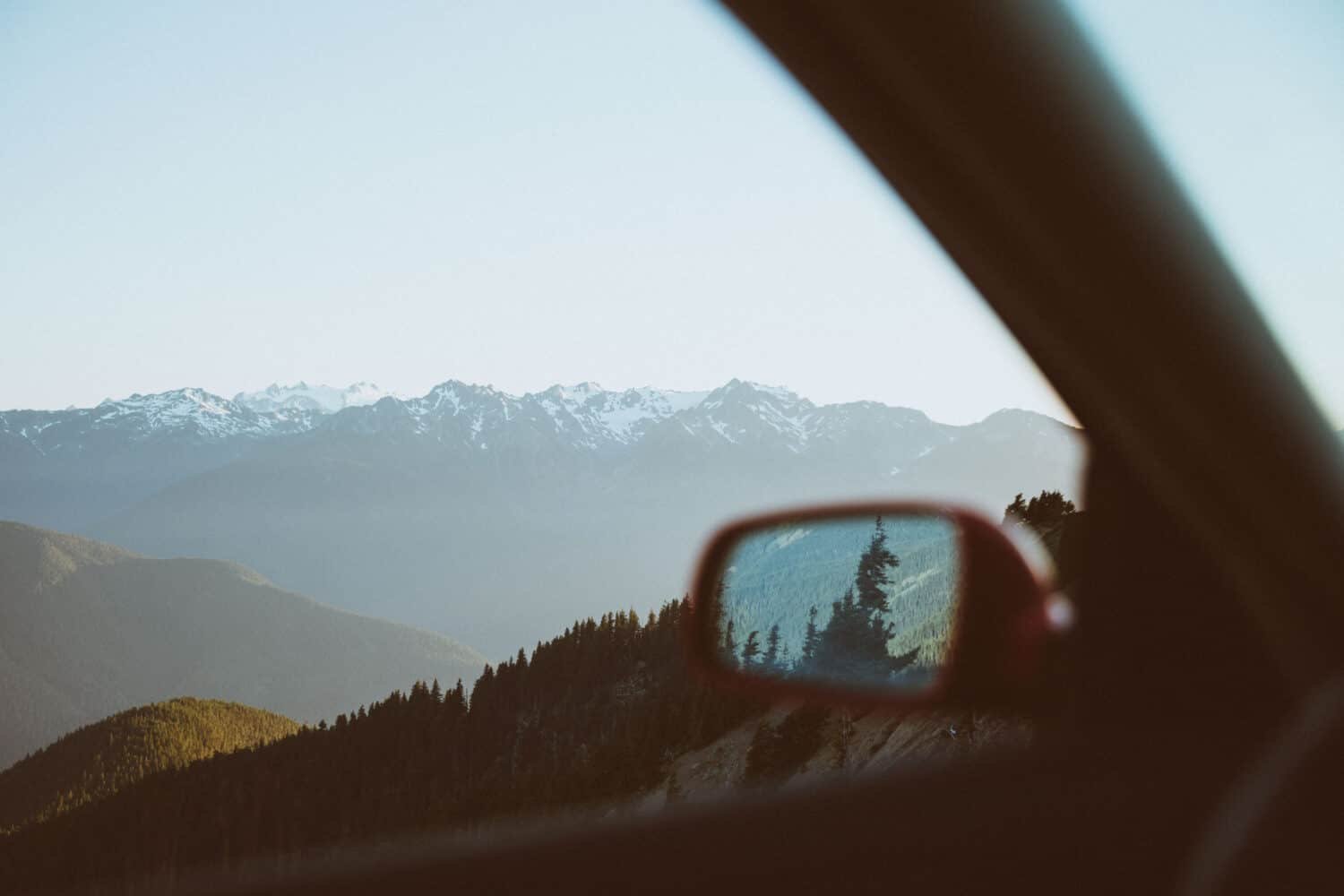
>
Olympic Mountains Areas (North)
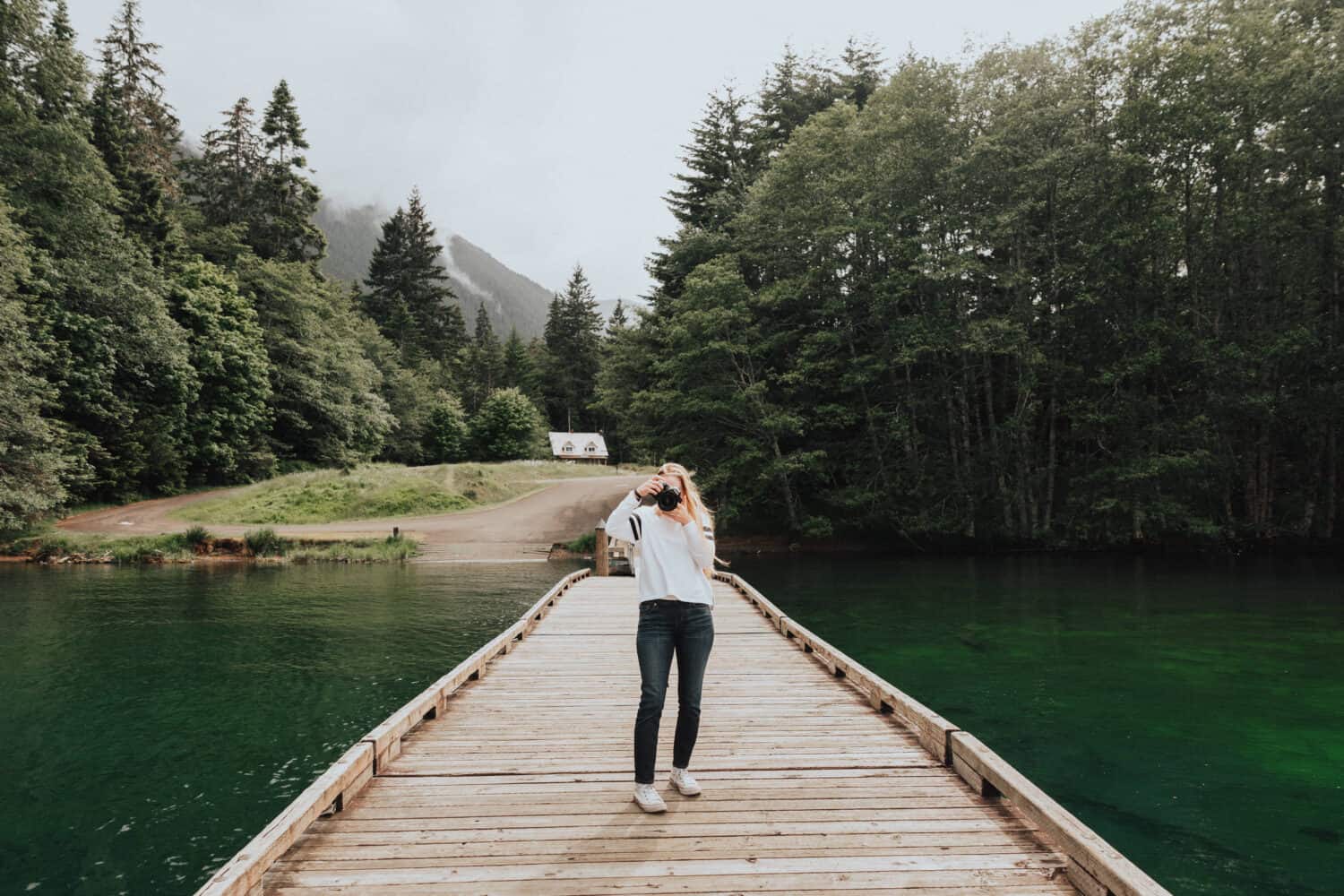
>
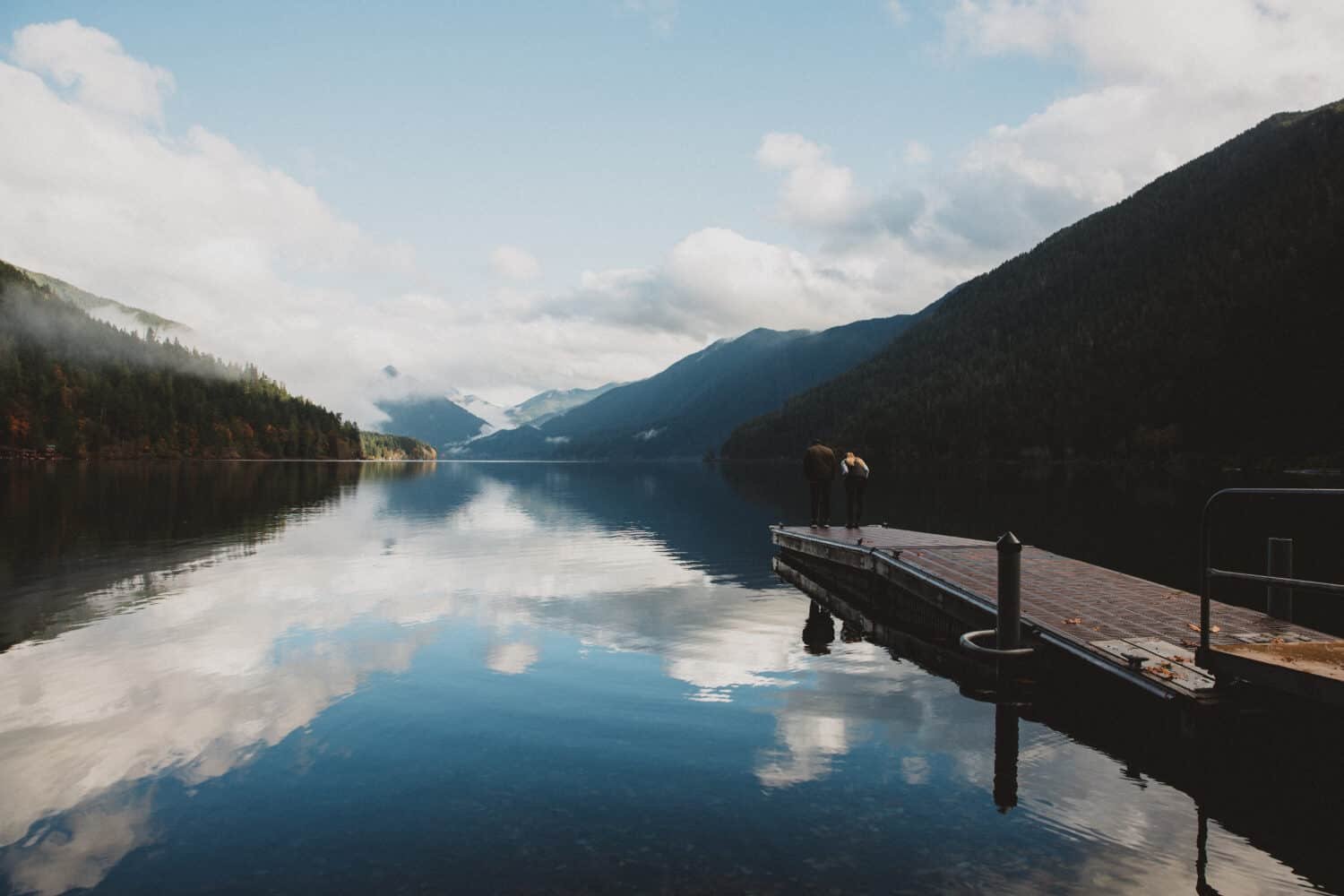
>
Lake Crescent
One of the most iconic things to do in Olympic National Park is to visit Lake Crescent. Its quintessential summer vibes draws crowds all year long! Come for a beautiful sunrise in the morning of your Olympic National Park itinerary. Better yet, spend the afternoon jumping in the lake!
The easiest public access spots are located at the Mount Storm King Trailhead. Alternatively, you can access the lake on the western side of the lake at Fairholme General Store / Campground.
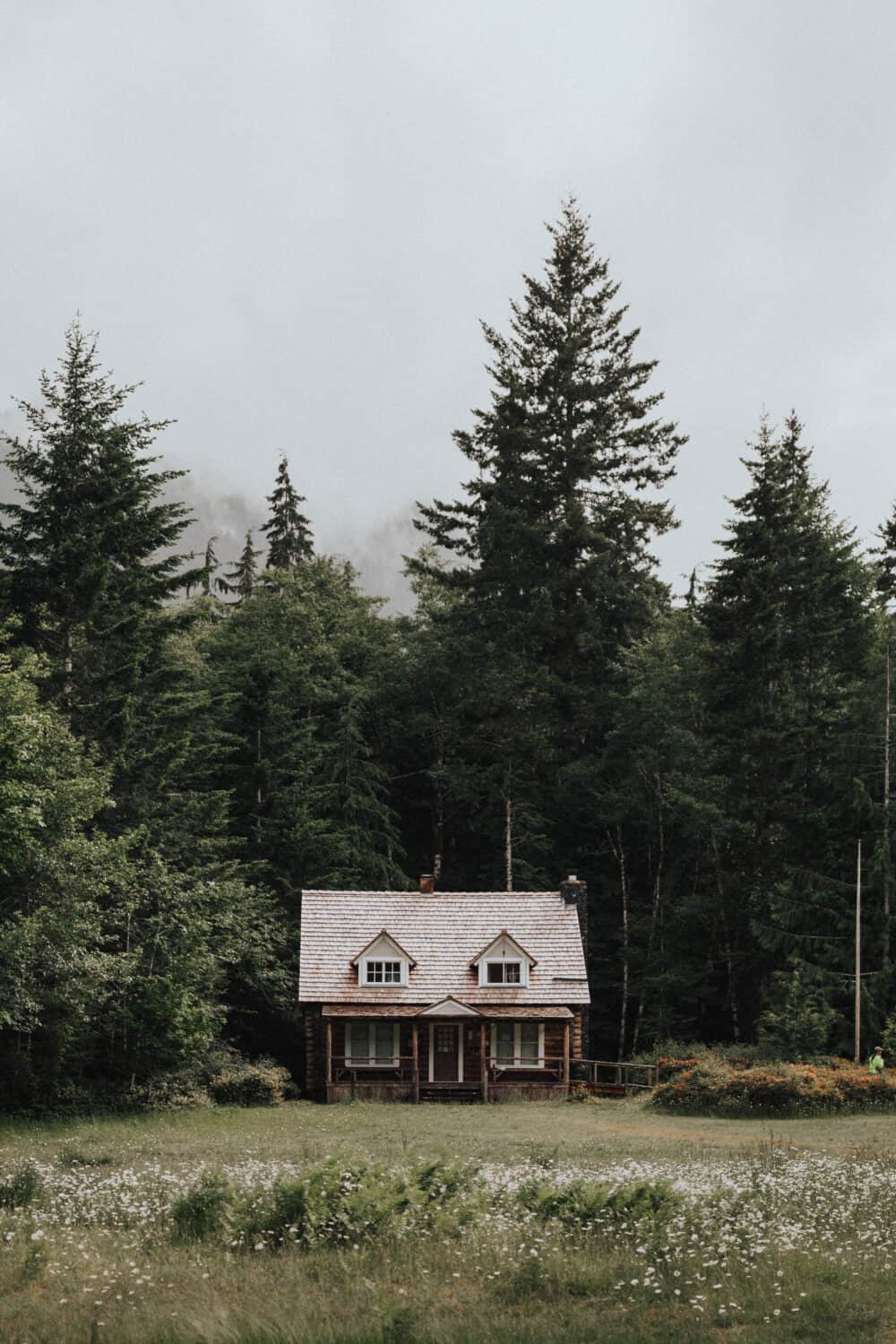
Mount Storm King Ranger Station
Sitting on the shore of Lake Crescent is one of the Olympic National Park’s most iconic ranger stations. Storm King Ranger Station! You’ve very likely seen this cabin on social media. Its symmetrical dormer windows and front porch surrounded by evergreen trees is too beautiful not to capture!
*Just remember, it’s out of commission, so stop by Port Angeles for all your questions before you visit the Olympic National Park!
This is a very easy stop if you’re looking for convenient places to see in the Olympic National Park. Park at the Marymere Falls Trail parking lot, and take the very short trail down towards the water.
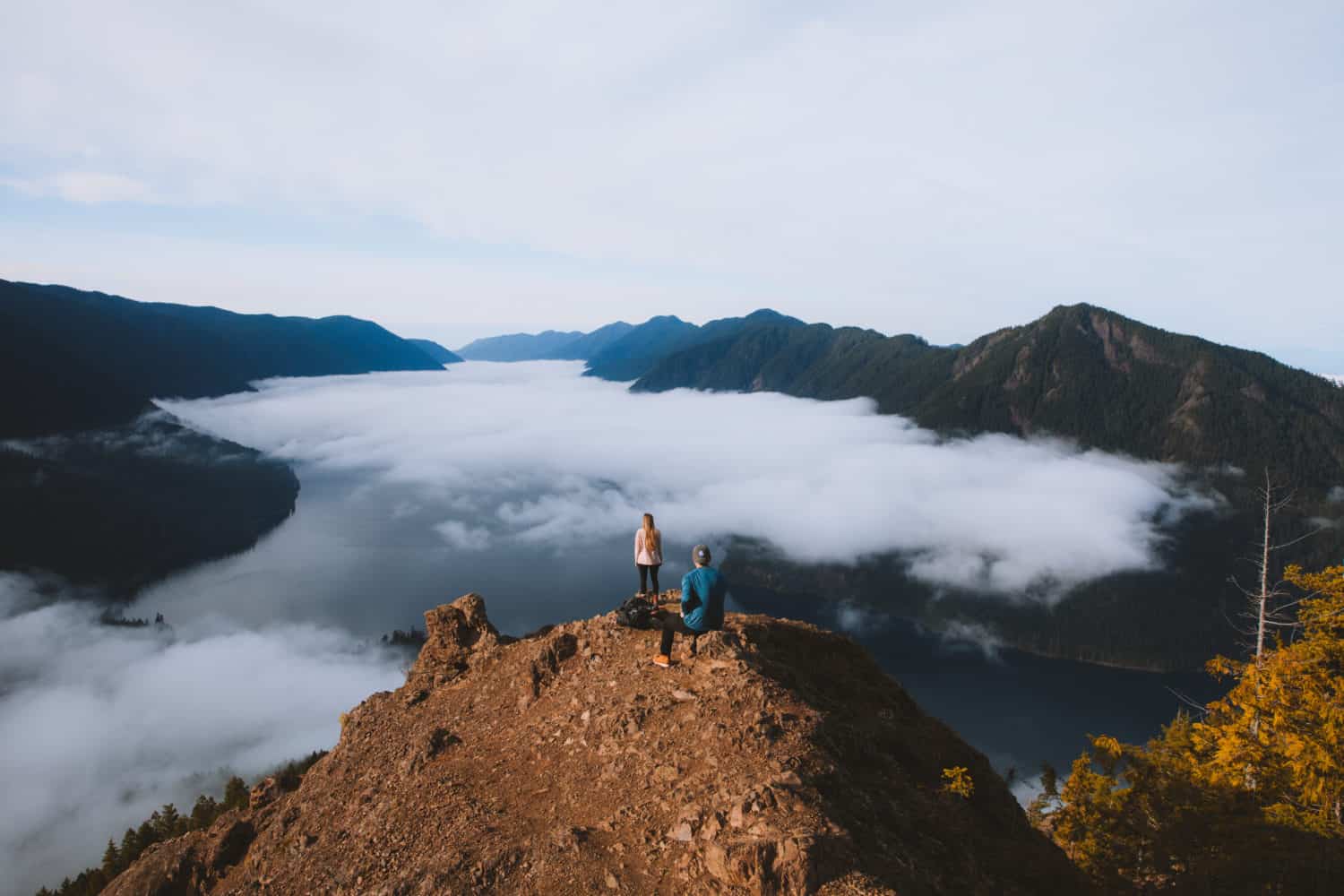
>
Mount Storm King (And Marymere Falls)
Climbing Mount Storm King Trail is hands down one of our absolutely favorite hikes in Olympic National Park. This 4.7-mile out-and-back trail ascends over 2,000 feet in a short distance. This makes it a challenging climb for even the most skilled hikers.
It will all be worth the sweat and tears (and blisters) though, because the peak brings you above the clouds! You will be rewarded with a perfect view right down the middle of the long Lake Crescent straight ahead. Better yet, you may even experience an inversion like this love in the photo above!
Just want a simple Washington waterfall trail? The easy route to Marymere Falls can be started from the same trailhead. This 0.9-mile out-and-back trail brings you across wooden bridges and through the old-growth forest. At the end, the trail reveals the cascading 90-foot tall Marymere Falls!
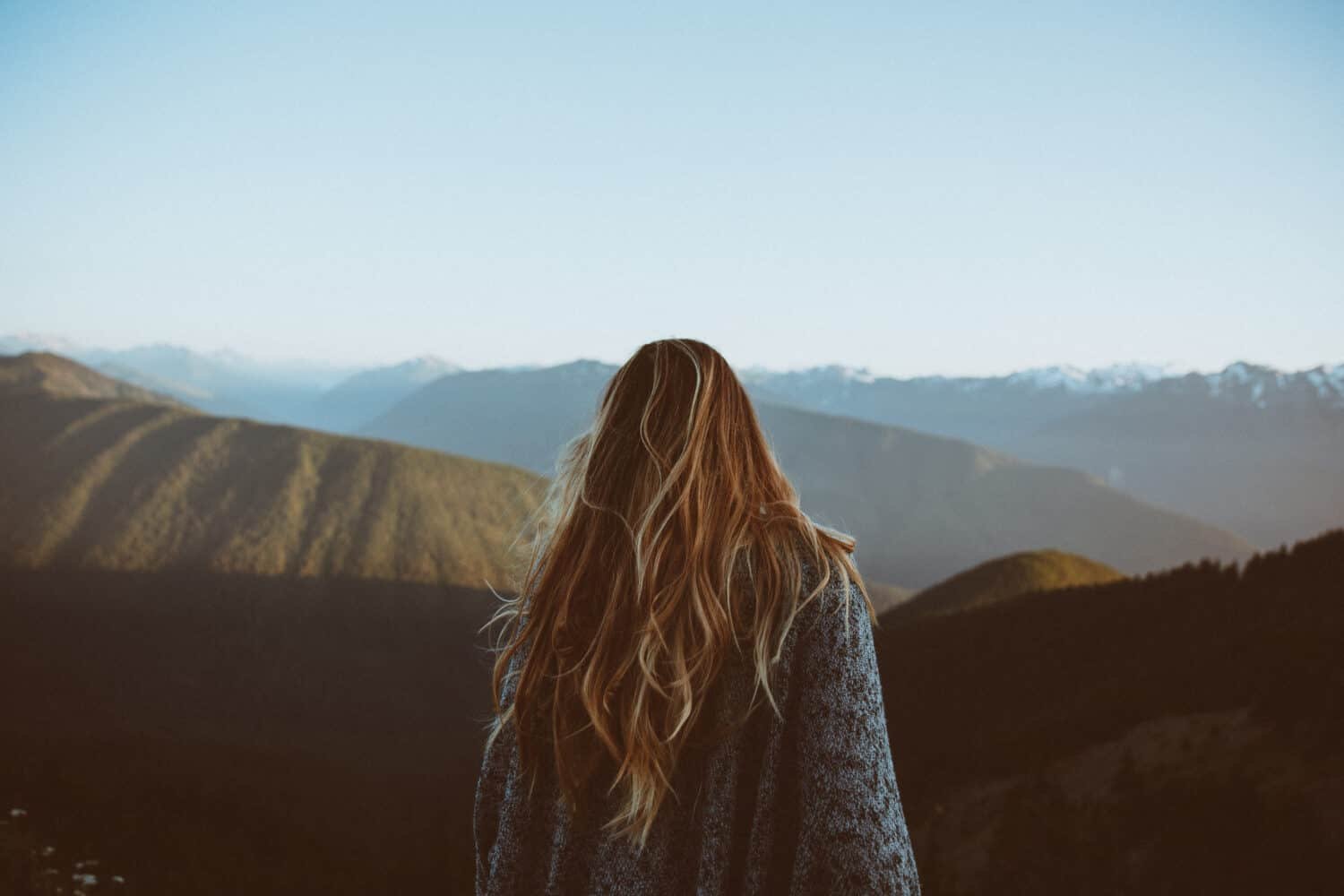
>
Hurricane Ridge
Hurricane Ridge is one of the best places to go in Olympic National Park for easy access to beautiful mountain views. Stay for sunrise, sunset, or come for a mid-day hike – anytime is a perfect time to visit Hurricane Ridge!
Take the picturesque walk on the Klahhane Ridge Trail (3.8-miles one-way) or the Hurricane Hill Trail (3.2-miles out and back) for expansive views of the surrounding mountains in all directions!
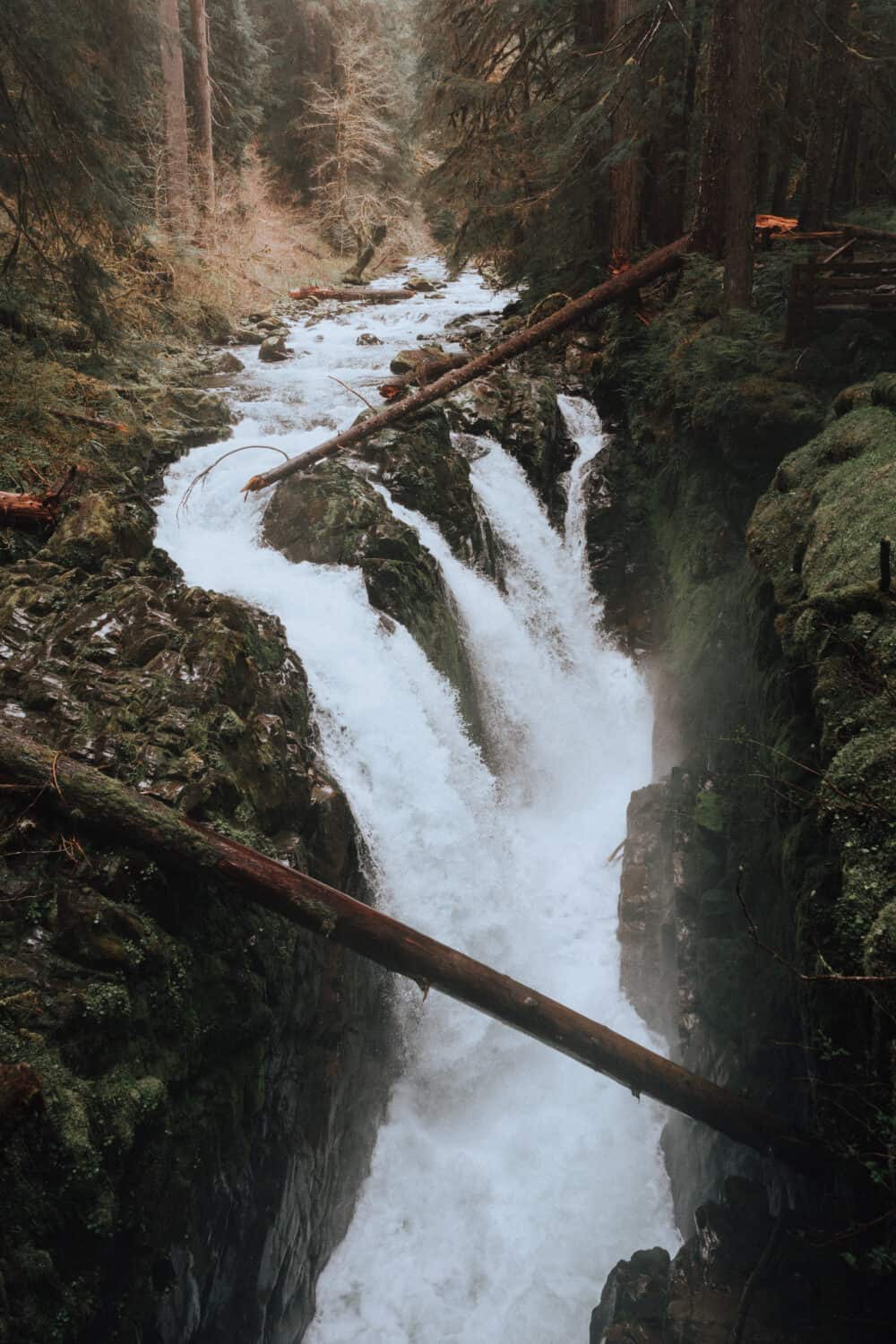
>
Sol Duc Falls
Sol Duc Falls is an easy 1.6-mile out-and-back trail to one of Washington’s prettiest waterfalls! Tucked away in the lush temperate rainforest of the Sol Duc Valley, it’s absolutely worth the hike. This waterfall splits into three sections and tumbles down 48 feet to the river below.
There are several perspectives of Sol Duc Falls to enjoy. This is why you’ll see many photographers there with their tripods on any given day! View it from the bridge that crosses the river, or on either side of the falls for several ways to enjoy this popular Olympic National Park attraction.
Note: To reach Sol Duc Falls, you’ll have to pass through an Olympic National Park entrance station – day passes are $25, but annual passes are $80 for unlimited park access for a year! If you plan to do lots of exploring, consider the America the Beautiful pass, as well as these other epic northwest forest passes!
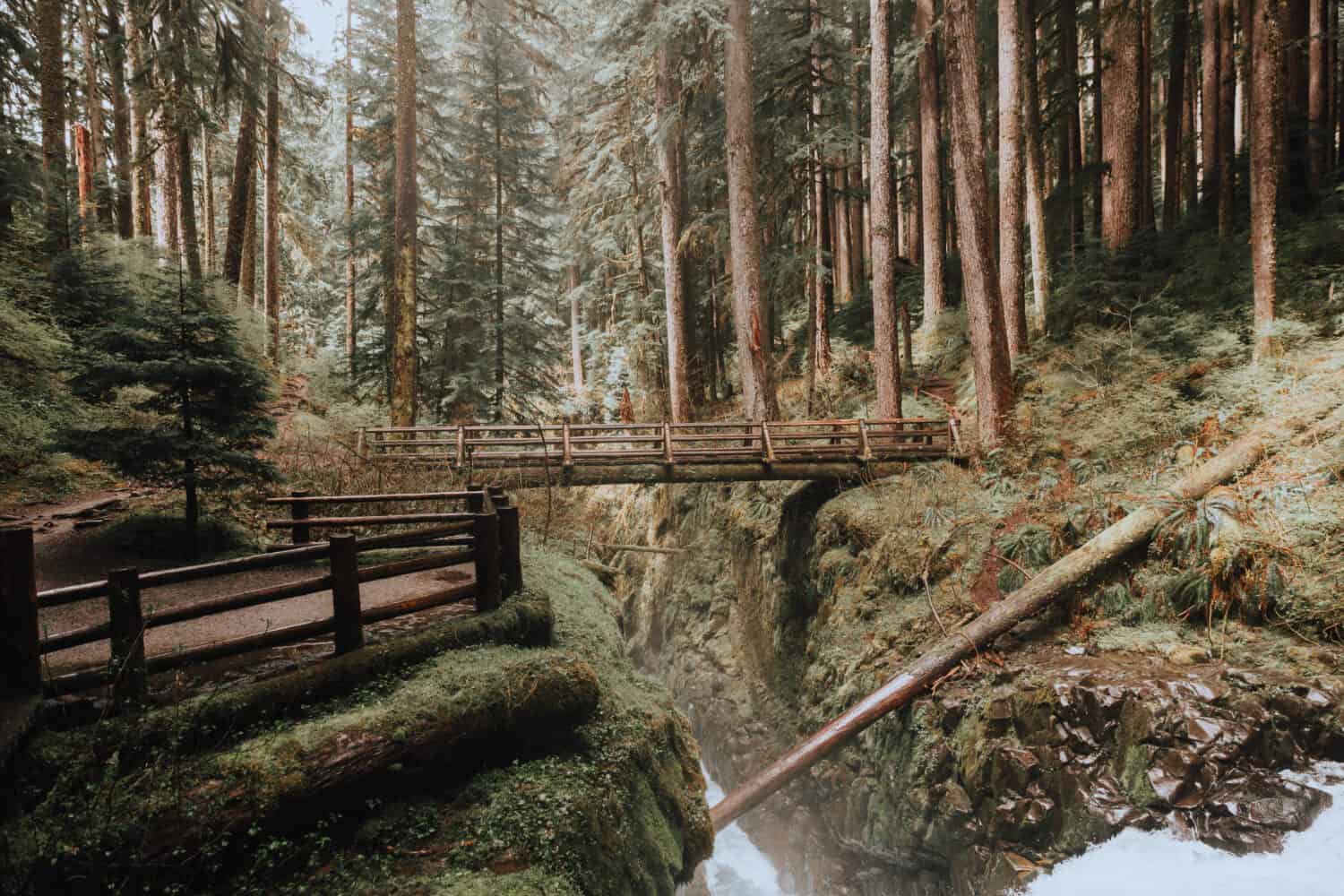
>
More Things To Do In Olympic National Park Mountain Areas
Olympic Hot Springs
Olympic Hot Springs was once an epic soaking destination near Boulder Creek in the Elwha Valley. Today these neglected hot springs are left to fend for themselves after a washout prevented easy access. The national park makes it very clear that these waters are not maintained. It may contain high levels of harmful bacteria, so soak at your own risk!
This daunting 10.4-mile out-and-back trail can be taken in one long day trip, but it is recommended to obtain a wilderness permit and camp at the nearby wilderness campground to maximize your time at these hot springs in the Pacific Northwest.
High Divide / Seven Lakes Basin Loop
This multi-day backpacking trip in the Olympic Mountains is perfect for stargazers and wilderness explorers. It’s also perfect for people who want to experience the park with fewer crowds. Start either at Sol Duc Falls Trail and make a loop, or opt for a thru-hike that ends in the Hoh Rainforest.
This trail is best taken in late August or early September. This way, all the snow has likely melted and the autumn rains have yet to come! Make sure to obtain a wilderness permit before you begin your hike.
Olympic National Park Rainforest (West)

Lake Quinault
Lake Quinault is a great place to visit in the Olympic National Park for the vast variety of activities! You can spend the whole day swimming on the quiet shores of Lake Quinault, take a drive through the temperate rainforest, or even splurge and enjoy a bit of PNW luxury at the Lake Quinault Lodge.
This is also a great place to do some long hikes and venture deeper into the valley. Shorter hikes can be found at the southern part of the lake. Trails like the Rainforest Nature Trail (0.5 miles) or short trails to ancient trees are fun and easy for the whole family to enjoy!
This is a great place to have a home base during your stay in the park. From here, you can do several shorter day trips of epic things to do in Olympic National Park!
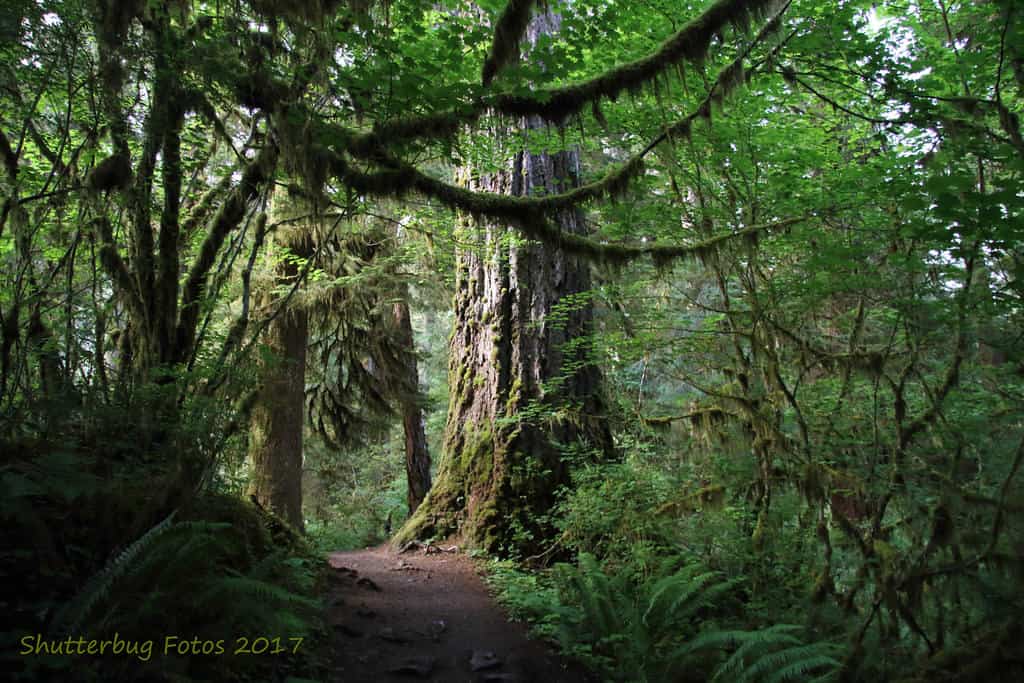
Hoh Rainforest
Were you inspired to visit Olympic National Park because you saw a photo of trees covered and dripping with bright green moss? They are most likely found right here in the Hoh Rainforest!
One of the best hikes to take in the Hoh Rainforest is the Hall of Mosses Trail. A 0.8-mile east walk that brings you under the green canopy of old-growth trees with dripping moss.
If you want a little longer of a hiking trail in Olympic National Park, consider taking the Spruce Nature Trail. This 1.2-mile walk brings you through this scenic trail lined with lush ferns and mossy trees. Stop ever so often to read the interpretive signs along the way and discover new facts about Washington’s temperate rainforest!
FYI: Another hike, the Hoh River Trail is one of the most haunted places in Washington!
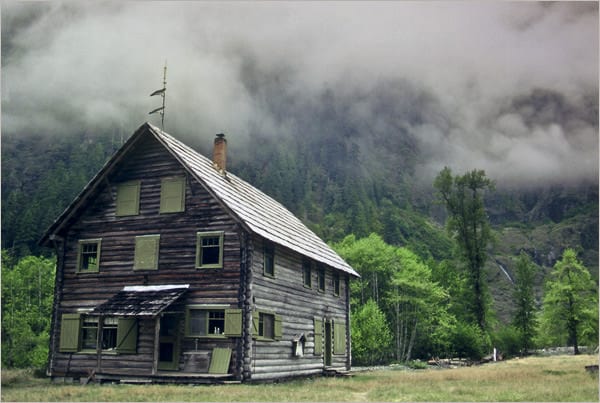
The Enchanted Valley
Calling all adventurers and history buffs! This 26-mile out-and-back backpacking trip to the Quinault River Chalet. This World War II-era ranger station (now on the list of National Register of Historic Places), is a haven for tired travelers and seekers of solitude.
There are many ways to reach this ranger station. The most popular route to The Enchanted Valley is via The East Fork Quinault River Trail. This trail requires a permit, and only a limited number of hikers have access per year.
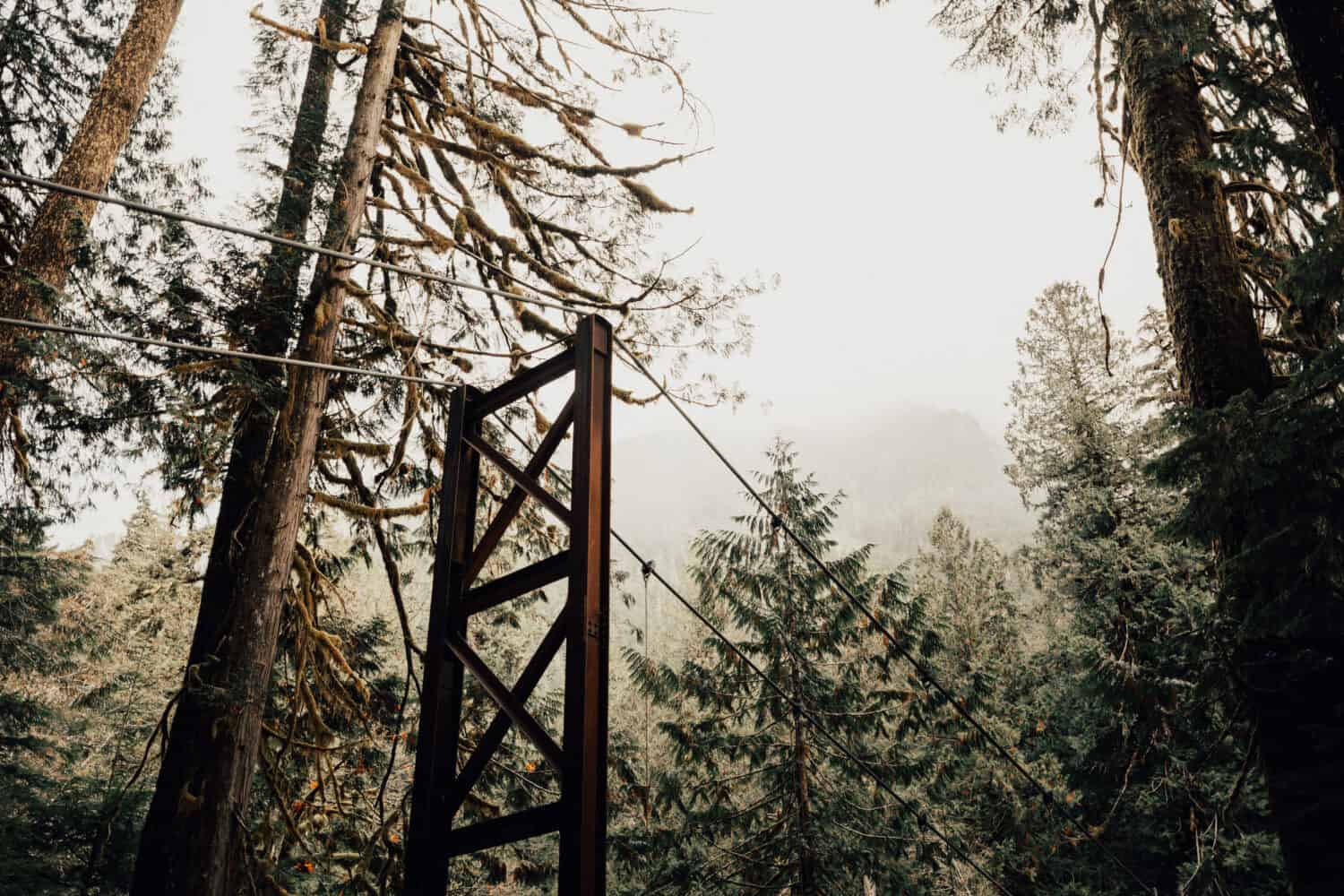
>
Olympic National Park Rainforest (East)
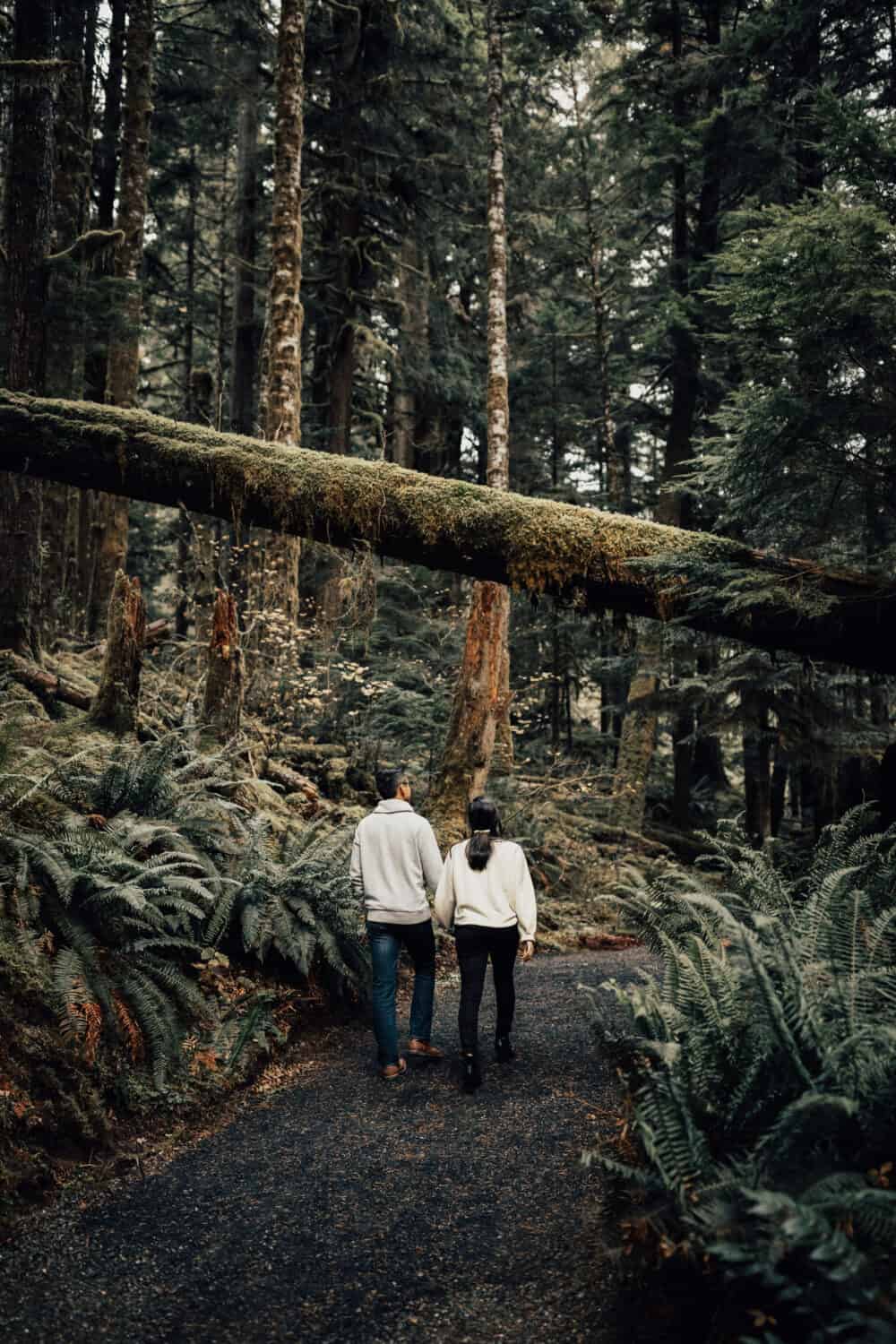
>
Staircase Area
Do you love the temperate rainforest but don’t love the crowds in the Hoh Rainforest? Consider taking a trip to the Staircase area of Olympic National Park instead!
Staircase is located in the southeast area of the park, about a 1.5-hour drive from Port Angeles. This area hosts giant ancient trees, fern-covered trails, and lots of opportunities for front AND backcountry camping.
One of the most popular hiking trails in the Staircase area is the Staircase Rapids Loop. This is a short 2-mile trail that follows the North Fork Skokomish River.
For a little more seclusion, take the super steep 2.9-mile hike to Wagon Wheel Lake for stunning mountain views!
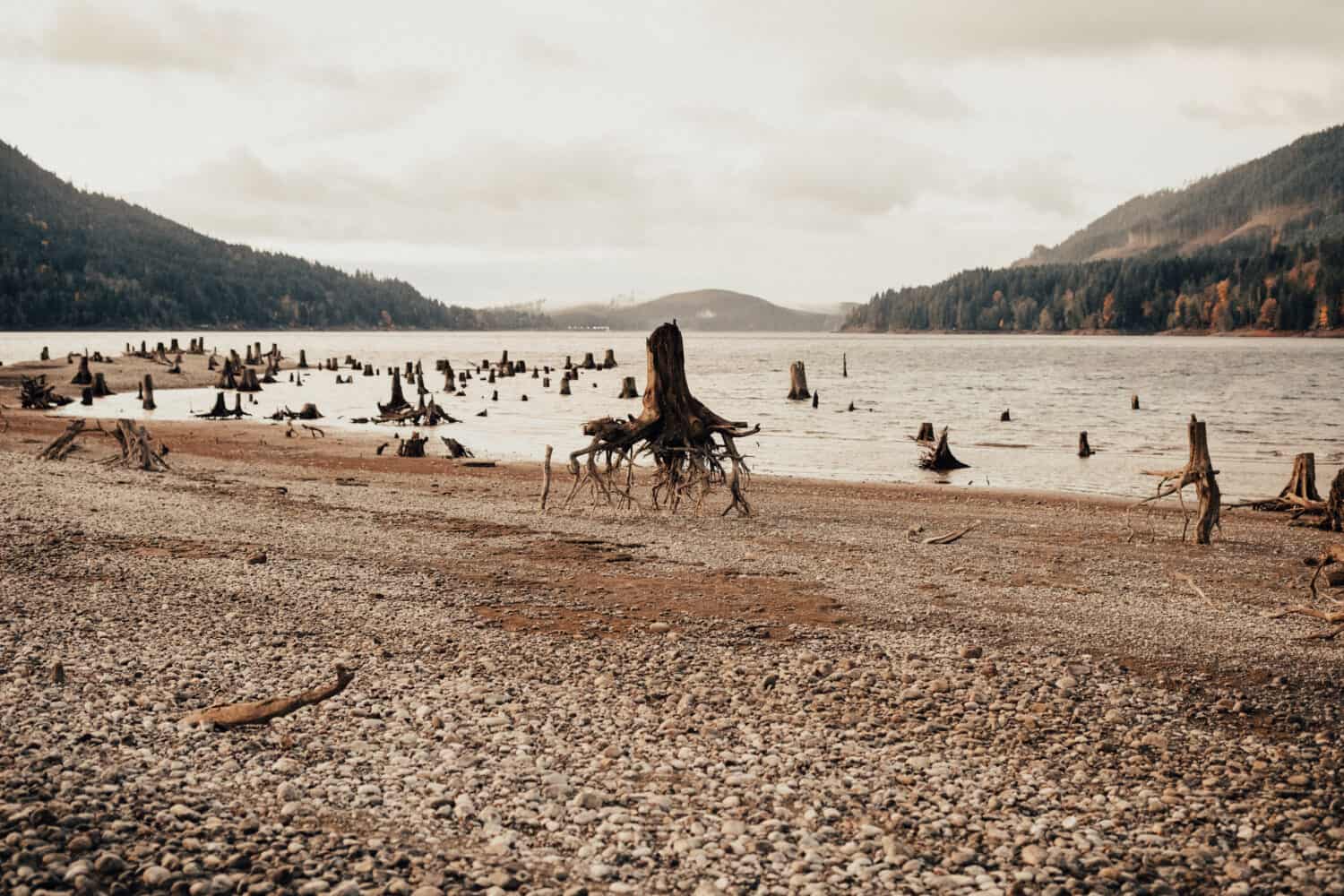
>
Lake Cushman
Lake Cushman isn’t technically in the park. However, the Olympic National Park borders touch the very north section of the lake! To access the lake from the park, take the Shady Lane Trail to the end.
While in the area, Lake Cushman is absolutely worth a visit, especially in the summertime. Consider visiting the Skokomish Park Day Use Area for a sunny day by the water. Here you have access to swimming, canoeing, and boating!
In the winter, you can visit the shores of Lake Cushman and experience the spooky-looking dead tree stumps that scatter the shore. It’s quite a sight!
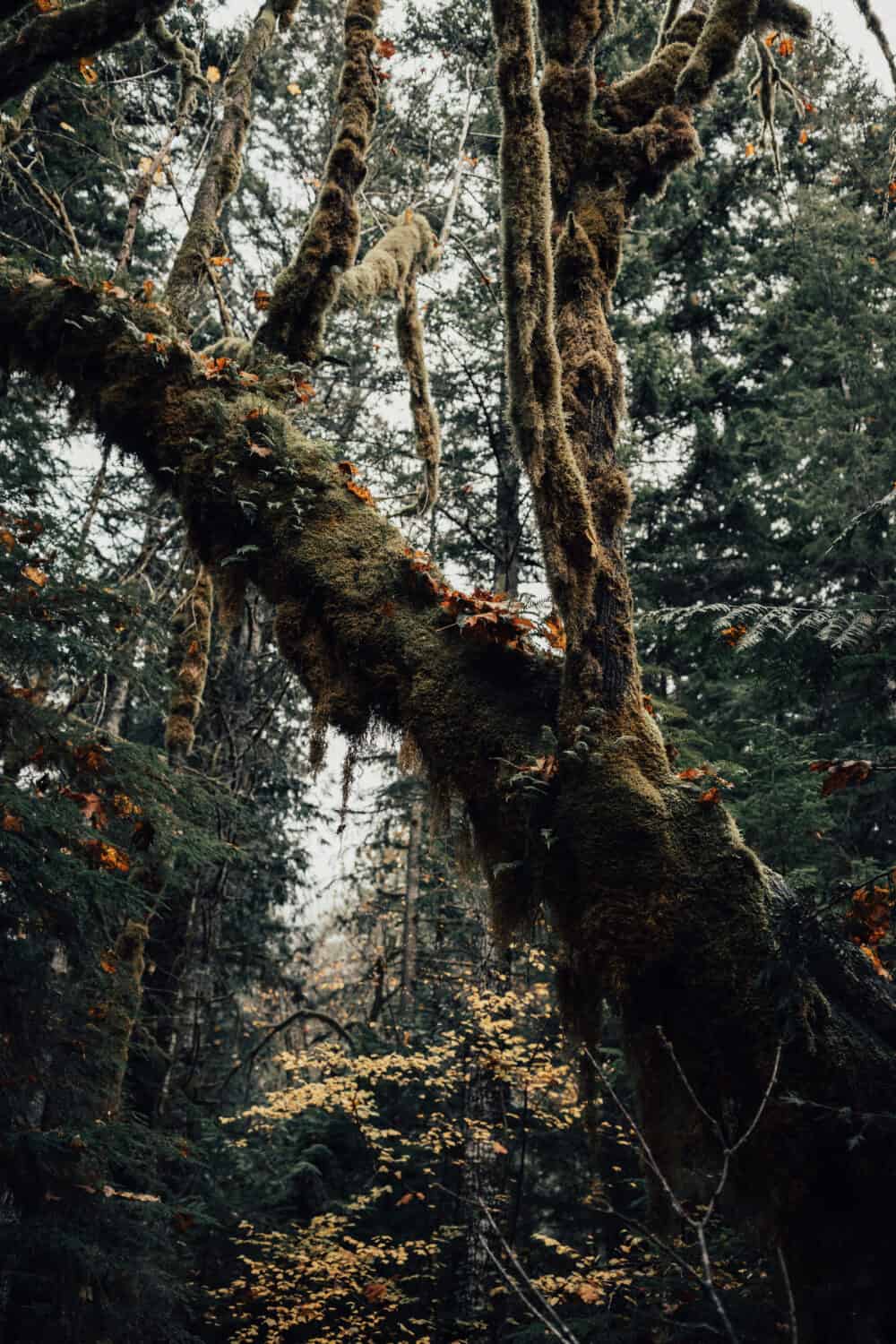
>
Dosewallips Area
The Dosewallips Area of Olympic National Park is often overlooked. Being located on the Southeastern side of the park, it’s away from the bigger attractions. The Dosewallips Forest Road is washed out on Olympic National Forest landing, preventing easy access to trailheads in this area.
However, a lack of easy access doesn’t mean it isn’t worth a visit! Because of the washout, all campsites are now walk-in, with plenty of sites to choose from. Bonus – they are rarely full! If you are willing to hike in 5.5 miles on a washed-out road, you are likely to have the place to yourself.
Some of the most beautiful and less-traveled hikes in Olympic National Park are located here. This includes Constance Pass, Constance Lake, and West and Main Fork Dosewallips Trail. Just remember to obtain a permit for any backcountry camping!
Olympic National Park Itinerary
So, how exactly do you plan your days for the perfect ONP itinerary? We are sharing examples of how to break down a one-week Olympic National Park itinerary and a long-weekend itinerary below.
Long Weekend In Olympic National Park
This Olympic National Park Weekend Itinerary is perfect for people who live in Seattle. This is the perfect weekend trip from Seattle, where you can drive through the park and see the highlights!
- Day 1: Seattle to Port Angeles, Sunset at Hurricane Ridge
- Day 2: Sol Duc Falls, Cape Flattery, sleep in Forks, WA
- Day 3: Rialto Beach Hiking, La Push Hiking, sleep in Forks, WA
- Day 4: Hoh Rainforest, Ruby Beach, Kalaloch, sleep at Lake Quinault Lodge
- Day 5: Visit Staircase in the morning, drive back to Seattle
1-Week Olympic National Park Itinerary
- Day 1: Take the ferry from Seattle to Port Angeles, Sunset at Hurricane Ridge
- Day 2: Sunrise at Lake Crescent, hike Mount Storm King, sleep in Port Angeles
- Day 3: Drive to Sol Duc Falls, Cape Flattery, sleep in Forks
- Day 4: Hike Rialto Beach, La Push Beaches, sleep at Second Beach
- Day 5: Explore Hoh Rainforest, Ruby Beach, Kalaloch, sleep at Lake Quinault Lodge
- Day 6: Drive to Staircase Area, camp in Staircase Campground
- Day 7: Drive back to Seattle
Want to stay longer? Sign up to be on our email list and receive a totally complimentary 10-day Olympic National Park Itinerary on us! Feel free to download it, modify it, and have the best adventure yet!
Map Of Olympic National Park
Below is our map of favorite activities in the Olympic National Park. You can actually save this map for your own future use by clicking on the upper left corner! It will open up in a new browser, and you can save it for future use!
Make sure to check out our road trip planning tools for our tricks on how to download maps offline, so you can explore without cell service!
Olympic National Park FAQ
What Kind of Wildlife Live In The Olympic National Park?
Deer, foxes, coyotes, marmots, and mountain goats can be seen on the longer hikes in the Olympic National Park.
While backcountry hiking, you are more likely to see larger animals like mountain lions, lynx, and black bears. Remember to always hike with a buddy, bring bear spray, and use a bear canister when backcountry camping!
What Native American Tribes Are In The Olympic Peninsula?
Located on the Olympic Peninsula are 8 different Native American tribes. You can expect to find many cultural and historic structures around the area.
The most prominent Olympic Native American tribes include the Makah Tribe, Lower Elwha Klallam, Hoh, Quinault, Skokomish, Quileute, Jamestown S’klallam, and Port Gamble S’Klallam.
How Many People Visit Olympic National Park Every Year?
In 2019, Olympic National Park saw 3.2 million visitors, and every year since then it’s seen similar numbers. The areas of the park that receive the most visitors include the Hoh Rainforest, Hurricane Ridge, and Lake Crescent.
There are so many things to do in Washington, but it’s a no-brainer that the Olympic National Park receives a lot of visitors. It’s a place where you can see a lot of diversity while not traveling very far!
How Did The Staircase Area Of Olympic National Park Get Its Name?
You may be confused as to why you won’t be seeing a staircase on the list of bucket list things to do in Olympic National Park.
Back in 1890, Lieutenant O’Neil and his work crew had a tough time getting through the Skokomish Wilderness. This was especially true across the river and the rock bluff near the campground today.
Therefore, they built a cedar staircase to help them get across as they worked! It stayed until 1911 when the Shady Lane Trail was built in its place. The name still remains as a reminder of the history and the people that shaped the area!
What are some of your favorite things to do in Olympic National Park? Did we miss any of your favorite national park hikes, camping spots, or hidden gems? Share with us in the comments below!
MORE WASHINGTON DESTINATIONS
Cool Activities To Do In Ocean Shores, Washington
30 Gorgeous Hiking Trails in Washington State
The Best Photo Spots In Washington State
Essential Gear To Pack For A Trip To The Washington Coast
How To Find Free Campsites In The Pacific Northwest
